

Everything you wanted to know about my Career Break travels
By: Author Jaclynn Seah
Posted on Published: August 5, 2017 - Last updated: July 5, 2024
Categories How I Travel , Occasional Travel , Solo Travel , Travel Planning
So if you’ve been following The Occasional Traveller since 2016, you’ll know that it’s been a rather unusual year for me. Instead of balancing work and travel like I normally do with a full time job, I quit my job in February 2016 to embark on a long-awaited plan to travel extensively for a year, also known as my Career Break year.
Well, at least the plan was for a year. Officially I was supposed to be back home end March in time for my birthday and to catch Coldplay in concert, but I spent my birthday flying over the Nazca lines in Peru and I hadn’t even made it to Machu Picchu and the Uyuni Salt Flats at that point, so I wasn’t quite ready to head home, just yet.

In early June 2017 – I touched down in Singapore’s Changi Airport with no real plans to travel anywhere for a bit. Career Break 2016-2017 was officially done and dusted.
I kept pretty detailed records on my career break travels so I could look back and see how I might have done it better. But you know what, good or bad, I wouldn’t change any of it just because this was all part of my crazy experience. I hope this blog post helps anyone planning their own career break whether practically or inspirationally, but always remember – you do you . Go where you want to go, do what you want to do and don’t do what doesn’t make you happy, spend as much as you can afford and just travel your way , all the time.
Japan & Taiwan
Eastern europe + kenya, latin america, other trips: south-east asia and usa, where to go, vaccinations, overseas credit and atm cards, travel insurance, itinerary & budgets, photography & tech gear, booking apps, other travel essentials, essential packing tips, how much to pack, laundry tips, packing essentials for hostel living, breakdown of expenditure, how i funded my career break, post trip – now what.

Here’s a look at an interview I did with the Business Times about my travels in February 2017 – it doesn’t quite cover my entire Career Break but it gives you a quick overall sense of my journey up to that point. Also check out this interview by yp.sg .
Where did I go on my career break?

So in total, I travelled for about 16 months from February 2016 to May 2017. I didn’t travel continuously though – I wanted to try long term travel but I knew that being on the road for too long would tire me out as well. I definitely got better at it along the way though – at the 7 week mark in my Asia Leg I was all ready to go home, but, 5 months in to the South America Leg and I felt like I could probably have gone on a little longer if I wanted to.
In summary:
- I visited 37 countries in total over 5 continents – a big part of that is because I covered a lot of countries in Europe (20!) even though I might only have visited one city in those countries
- 23 countries were new to me (Those places marked with * indicate new countries or new cities) – now my total country count is 54 which is still pretty mindboggling to me
- I spent 350 nights sleeping in a foreign bed – most of which were in shared hostel dorms. I think I know a little something about hostel living and picking out the right hostels now~
Here’s a more detailed look at the places I visited during those 16 months – I listed countries as well as the major cities that I slept in for the night.
7 weeks / ~2 months

I spent 7 weeks travelling in Japan and Taiwan – 4 weeks in the former and 3 weeks in the latter. I actually cut short my Taiwan trip a little because even though it’s one of my favourite countries, I was going at a really quick pace and I hadn’t quite gotten used to long term travel yet, so I got tired towards the end and was actually relieved to get home for a bit.
My journey started in Tokyo, cut across central Chugoku region towards Hiroshima and Fukuoka, and then across the sea to Okinawa. From there I flew to Taipei and then went clockwise around the island, ending my Taiwan journey in Taichung and flew home from Taipei.
Japan – Tokyo , Takamatsu*, Shodoshima*, Naoshima *, Kurashiki*, Onomichi *, Matsuyama* Hiroshima*, Fukuoka*, Okinawa*
Taiwan – Taipei , Yilan *, Taitung *, Lyudao , Lanyu *, Kaohsiung *, Kenting, Tainan *, Taichung *

Some highlights:
- Saw the Sakura season in Japan and attended a Hanami party
- Visited the Setouchi Triennale 2016 on a press pass
- Cycled across the Seto Inland sea via the Shimanami Kaido
- Rode a scooter and explored Taiwanese offshore islands Lyudao and Lanyu
15 weeks / ~4 months

I bought my round trip ticket way in advanced so I had a fixed timeline of about 4 months from June to September 2016 to explore Europe, with London as my chosen base to fly in and out off. The pros: knowing the parameters of my trip, saving some money by booking early. On the other hand, it meant having to make plans around my fixed dates and flights which were not always the most convenient – my last destination was actually Berlin but I had to fly back to London because that was where my return ticket was from.
I flew into London to visit friends and attend a friend’s wedding, popped over to Zurich to visit another friend, and embarked on the great Balkan escapade over a lovely summer starting from Slovenia. After 2 weeks in Croatia and realising I didn’t actually have that much time for the entire Balkan region, I headed northwards after Dubrovnik towards the Baltic states until I hit Tallinn in Estonia. Then I flew to Amsterdam (just because I’d always wanted to see it), took a detour to Kenya and back to Berlin (also just because), before heading back to Heathrow and an insane dash to the airport to catch my flight home, phew!
United Kingdom – London , Manchester , Liverpool
Switzerland – Zurich *
Slovenia* – Ljubljana, Karst, Bled
Croatia* – Rovinj, Porej, Rijeka, Zadar, Split, Hvar, Vis, Dubrovnik
Bosnia & Herzegovina* – Mostar , Sarajevo, Konjic
Serbia* – Belgrade, Novi Sad
Hungary* – Budapest
Slovakia* – Bratislava
Austria* – Vienna
Czech Republic – Brno*
Poland* – Krakow , Wroclaw, Lodz, Gdansk, Warsaw
Lithuania* – Vilnius
Latvia* – Riga
Estonia* – Tallinn
Netherlands* – Amsterdam
Kenya* – Nairobi , Mombasa
Germany – Berlin*, Gottingen*
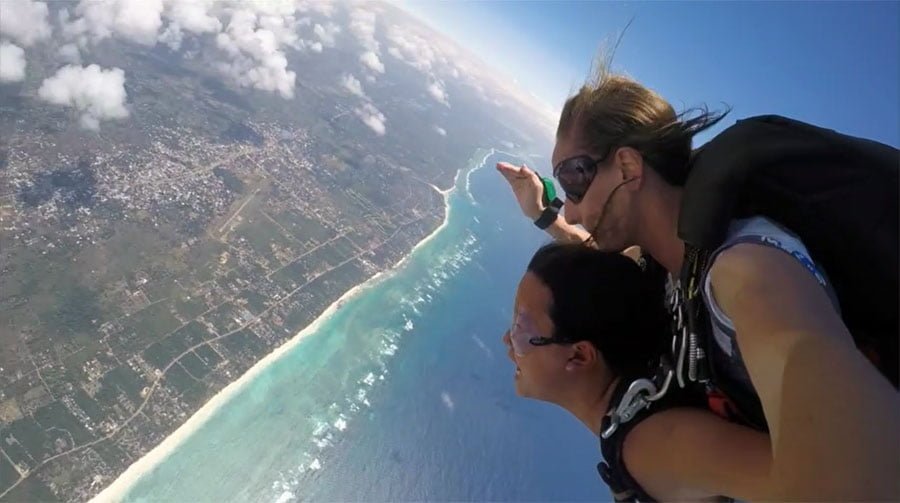
- Canyoning in Triglav National Park in Slovenia
- Crawled through caves in Budapest – also had my phone stolen here
- Whitewater rafting in Konjic
- Kayaking at night for beavers in Riga
- Had my Natgeo safari migration moment in the Maasai Mara
- Skydiving over a beach in Mombasa
22 weeks / 5.5 months
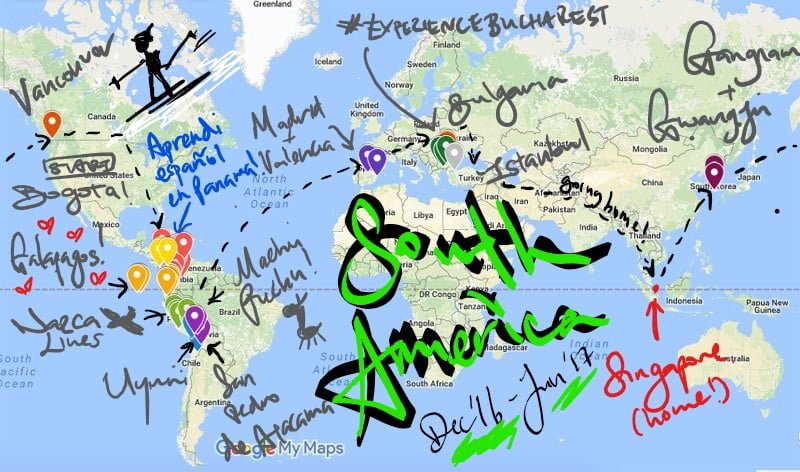
I had about 3 months at home to ‘rest’ before I embarked on this leg, but I actually spent a lot of it doing smaller trips around the Asian region (more on that in the next section), so I was still travelling pretty extensively even though I was technically at home. I also was procrastinating a little bit because I couldn’t decide whether to spend Christmas and New Year’s at home with family and friends or to get off my ass and start travelling again. South America was a completely unknown entity to me, and I was honestly a bit nervous about it, which is why I think I sat on my decision for awhile.
I had some accommodation to check out in South Korea so that’s where I headed first, and then up to Vancouver to ski and spend time with a friend. I figured out my South American flight and spent New Year’s Eve in the air, starting 2017 in Bogota, Colombia . From there I made my way down Colombia through Ecuador, and took a detour to Panama for a Spanish Language collaboration , before continuing my journey in Peru, circling down to San Pedro de Atacama in Chile, going up through Uyuni in Bolivia, and then heading back into Peru and ending my South American journey in Cusco. I flew to Spain for some downtime en route to Bucharest for a travel blogger conference, and then went through Bulgaria and finally ending up in Istanbul, turkey. Finally I flew home, ending my South American leg and my Career Break journey properly in early June 2017.
South Korea – Seoul , Gwangju *
Canada – Vancouver
Colombia * – Bogota, Medellin, San Andres, Cartagena, Santa Marta, Palomino, Cali, Ipiales
Ecuador * – Quito, Latacunga, Banos, Cuenca, Gua ay quil , Galapagos Islands
Panama * – Bocas del Toro, Boquete , Panama City
Peru * – Lima, Huacachina, Nazca , Arequipa, Tacna, Puno, Cusco
Chile* – Arica, San Pedro de Atacama
Bolivia * – Uyuni, La Paz , Copacabana
Spain – Madrid, Valencia*
Romania * – Bucharest
Bulgaria* – Sofia, Veliko Tarnovo, Plovdiv
Turkey* – Istanbul

Some Highlights:
- Attended a protest in Gwangju
- Intense skiing in Kelowna (and night skiing in Vancouver!)
- Jumped off a bridge ‘puenting’ in Banos
- Cruised and scuba dived with amazing wildlife in the Galapagos Islands
- Learned Spanish in Panama
- Flew over the historic Nazca Lines in Peru for my birthday
- Cycled down the infamous Death Road in Bolivia
- Visited the amazing Uyuni Salt Flats
- Climbed up to Machu Picchu
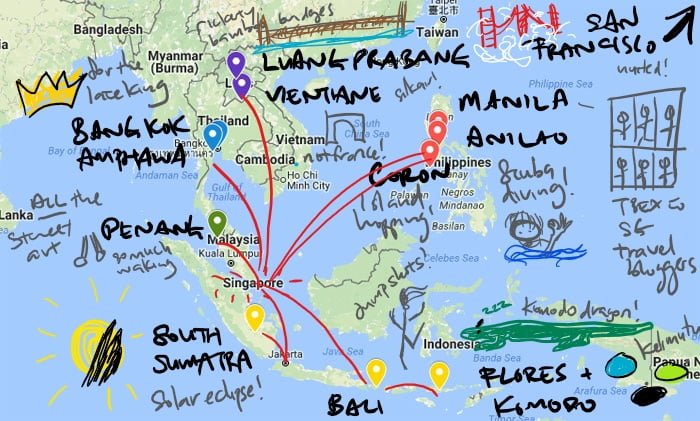
I took some smaller trips in between the major legs when I was back in Singapore, mostly media/FAM trip opportunities that I would not have been able to undertake in the past because of my full time working life, but now I could finally take them! Most of these were around the South East Asian region, but there was also the epic San Francisco trip which saw me take a 16-hour non-stop flight, make a 12 hour pitstop at home, and then head to the airport for another 12-hour non-stop flight to London. Now that was an insane time~
Malaysia – Penang
Indonesia – South Sumatra *, Bali , Flores *
United States – San Francisco *
Thailand – Bangkok , Amphawa *
Laos * – Vientiane , Luang Prabang
Philippines – Manila*, Anilao *, Coron*
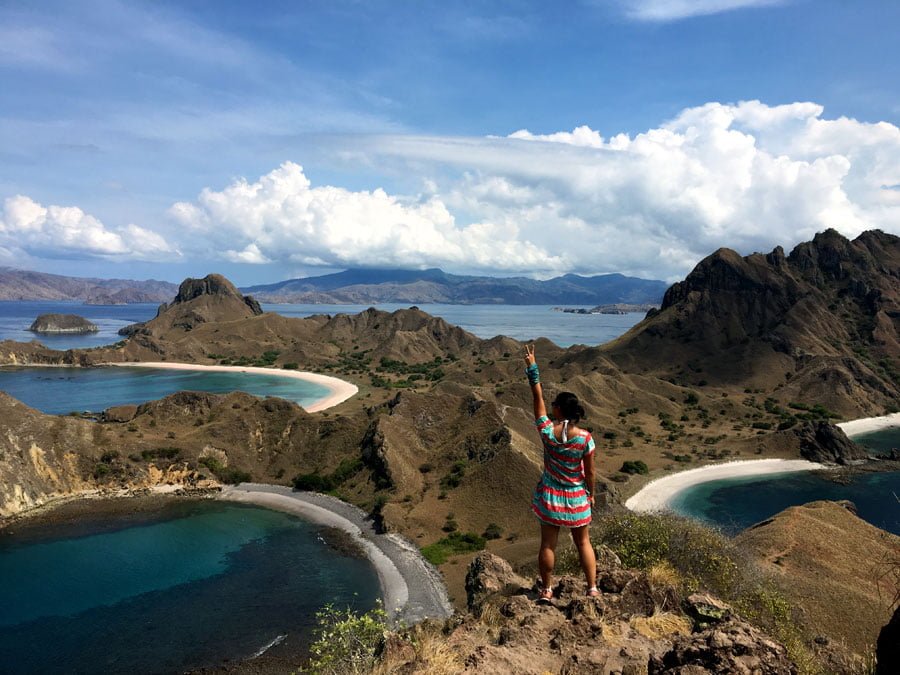
How did I plan my career break?

Honestly – I didn’t have much of a plan because I wanted to give myself more flexibility, which is something you don’t get as much of when you are only travelling occasionally. You kinda want to maximise a 2-week holiday or a long weekend as much as possible, but I didn’t want to be locked into a schedule for an entire 4 months.
So if you are looking for me to give you some sort of magic formula to planning long term travels… tough luck, you’re gonna have to make do with what I actually did for tips :P
I started out with a very broad idea of things I wanted to do:
- Europe and South America were on my list of regions I wanted to explore more of now that I had more time
- I wanted to visit new countries and new cities mostly, not so much places I’d been before. Preferably I wanted to head to areas less popular among Singaporean travellers
- Catching up with overseas friends was also quite high on my priority list as well
A lot of other random factors influenced my final itinerary as well, mostly from opportunities arising from the blog or just other cool things happening that I wanted to be a part off:
- Japan was largely due to me getting the JapanTravel photojournalism internship which helped me save a little bit. A big push was also the chance to see the blooming Sakuras in season
- London was my base to fly in and out of Europe because I had a friend’s wedding to attend and tickets to the new Harry Potter play, and it’s a major hub for flying within Europe and back to Singapore
- Zurich was purely to visit friends, as was skiing in Vancouver
- Kenya was a total detour when the chance to join my friend Helen’s inaugural small tours came up after I had bought my London flights. It was a bit of a YOLO decision, but I definitely don’t regret it even though it meant I was zooming through 3 Baltic states in a week to spend 2 weeks in Kenya. I highly recommend her both as a friend and tour leader over at Rock My Adventure

But there is some essential stuff that I definitely recommend doing pre-trip:
Some people have said that getting vaccinations is cheaper on the road than in their home countries, but I like the certainty and reliability of Singapore’s healthcare system. I went to Tan Tock Seng Travellers Clinic to get recommendations on what jabs I needed, but also to my local GP down the block just because it was more convenient (even if it did cost more). What I ended up getting:
- Hep A & Hep B
- Yellow Fever (this one comes with a cert, you may need it for certain countries in South America but I never had to pull mine out)
Because I was going to be visiting so many countries over an extended period of time, and not all the places I was visiting were credit-card friendly, I decided that my main source of currency was going to be via the ATM. The main thing I needed to figure out was which banks would charge the least or no fees for foreign bank cards.
- Many ATMs charge you an extra fee on top of what your home bank charges you – I was using Citibank at first because they don’t charge you that home fee, but I busted my card somehow and had to use my backup UOB card which charge me SGD5 every time I took out money on top of what the foreign bank charged me. Pretty sure I racked up a lot of unnecessary charges here!. If anyone from Singapore has a recommendation on an ATM card that doesn’t charge you extra, I’d love to know which one!
- Some banks have arrangements with certain foreign banks to not charge additional fees. The only downfall then is having to hunt down those particular banks when you want to use them.
Travel Insurance is a MUST for me – you can read more about why . You honestly never know when you’ll need insurance but I highly recommend you protect yourself. Travel Insurance came in especially handy on this trip. Some things I had to claim for:
- Partial claims for my stolen iPhone in Budapest – I bought a new phone in the suburbs of Budapest and while I couldn’t claim the full amount, any small bit does help
- Medical fees for when I fell sick and lost my voice in Krakow
Typically because I tend to travel quite suddenly, I have an annual plan, but the catch is that there is a 90-day out of country limit so I technically wasn’t covered for some bits of my 4 months Europe Leg because I was out of the country for more than 90-days consecutively! (You need to go back to Singapore to ‘reset’ the 90-days)
For South America, I took precautions and bought additional WorldNomads [ affiliate link ] to cover the weeks beyond the 90-day limit because unlike most plans, you don’t need to be in your home country to purchase it. It is more expensive though! Other people I know have flown back home and out again to get around that clause, but I wasn’t going to do that all the way from South America. An alternative that you can check out is Safety Wing [ affiliate link ] which is built for travel nomads.
During the Trip

I had some essential tools that helped keep me organised on the go. Actually I don’t think I’ve ever been so organised when it comes to travel in terms of recording my budget and travel details! It came in really handy when I was working on budget posts or just trying to remember where I was on a particular day and what I did.
Google Sheets – I had a master sheet which recorded everywhere I stayed, how much I spent and the flights I took. It was also pretty useful for itinerary planning on the go, especially when I started running short on time and wanted to figure out how long I could spend in a particularly place. These days, I use Trello to help with my trip planning because I like the way you can move things around.
Trail Wallet – I started out managing my budget on Google Sheets as well but it was such a hassle formatting for different currencies, so I bit the bullet and paid for the Trail Wallet app for the South American leg and I think it was an excellent decision because it saved me so much effort. It’s really easy to use on the go and visual, and does automatic conversions into my home currency so I definitely recommend it highly. Only for iOS users though.
Currency – I used my ATM card to withdraw cash mostly, and had little ziploc bags with labels to help keep my currency separate. I had SO MANY different currencies from all the different countries that I visited that it was essential to keep it all separately! I’m a big wallet type girl at home who carries every thing in one giant wallet, but on the road I usually used a tiny purse that I can stash deep in pockets and had a card phone case that I held on tight to.
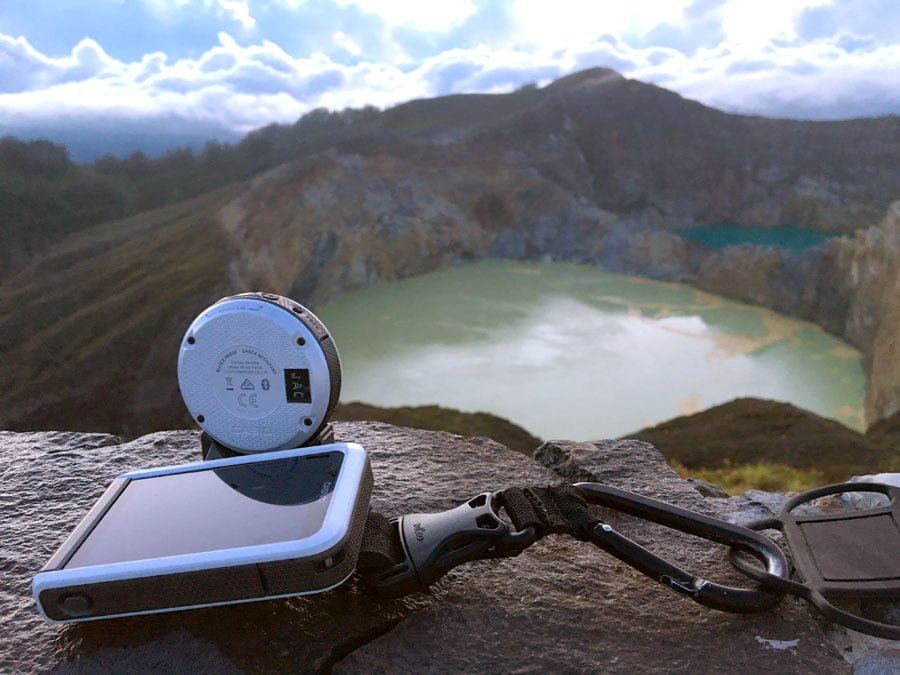
iPhone 6s – this was super essential as my main info source, note taker, translator, communication device and camera. The day I had my phone stolen in Budapest was an extremely upsetting one – I went straight out the next day after making the police report to buy a new phone in suburban Budapest, an expensive but essential thing I just had to do. I actually used my phone for writing blog posts when I didn’t want to bother fishing out my laptop, and I also developed an e-book habit on Kobo and read on my phone on long transits
Casio Exilim FR100 – this was my outdoor waterproof camera that I brought along for anything from canyoning to snorkelling, or even just went it started to rain. I really liked it but was sad to accidentally get water in it after the Galapagos. Thankfully it’s fixed now!
Surface Pro 3 – I needed to do some writing work and blogging on the go, so I brought along my Surface Pro 3 because it is lighter than the Macbook Pro I normally use at home. I like that it’s touch screen as well. This hybrid tablet-laptop is little pricey so the fear of losing it was pretty high. I think I disguised it pretty well in my laptop case which looks like an airmail envelope [ amazon affiliate link ].
Buffalo External HDD – I use this to back up essential documents and photos, and also because I needed a lot of my archives for freelance writing and blogging on the go, and there wasn’t enough space for all my photos in my Surface. I highly recommend this one with built in USB wires [ amazon affiliate link ] because you don’t have to worry about wires and it really is hardy – I’ve had mine for YEARS.
Xiaomi portable battery – I lost my original one in London on a rather drunken evening, so I had to make do with a back up throughout Europe, but this is definitely an essential given how much I use my phone, and all my friends recommended it and I can see why. The 10,000maH Xiaomi Portable Charger [ amazon affiliate link ] charges your phone very quickly and can go about 4-5x before it needs to be recharged
Dropbox [ referral link ] – I synced my phone photos to my computer as soon as I had wifi (sometimes shitty in places), and used it to transfer info between my computer and and used a Buffalo external HDD to back those up and keep my dropbox and camera from getting too full. I also carried an extra microSD card and thumbdrives just in case.
Instagram was my most updated social media platform that I used to chronicle my journey – I created a unique personal hashtag for each country that I visited which made it easy for me to pull out photos of places to recommend people when I didn’t want to dig through my entire photo archive
For accommodation: Booking.com [ affiliate link ] was my go-to in most places, followed by Hostelworld when I wanted to verify prices or reviews or find more ‘typical’ hostel type places. AirBnB was for when the cheap hotels and hostels in a place just proved unsatisfactory. I usually booked accommodation for the next place when I knew how I was going to get there or my transport had already been fixed. That ranged anywhere from a few days in advance to on the afternoon in the city itself when I found a wifi spot
For transport: there isn’t one main platform I used, it usually depended on the country, and quite often I’d just turn up in the bus or train station and get my ticket directly. That said, I loved Polskibus in Poland and used a lot of Cruz del Sur buses in Peru. You’ll also be surprised how many countries get Uber , though it is of varying popularity. Bogota, Medellin and Lima were surprising spots for Uber for me and great for airport transfers, and I used it a fair bit in Bucharest as well
For flights: I use Skyscanner for a sense of pricing and who’s flying where, and if I can I go direct to the airline website because I’ve not had good experiences booking from 3rd parties when I run into trouble! That said, I hate Vivacolombia’s website and it hates me in return too. I couldn’t book with my Singapore credit card and even when I used someone else’s card, I still ran into problems. SIGH.

Maps.me – for offline maps. Download the area map when you are on wifi to prep for a new place. You can download certain areas for offline use with Google Maps if you prefer. Usually Maps.me is pretty decent but I’ve run into times where it’s hard to find specific places because its not always as detailed as Google Maps. Also you need specific map apps for some countries – Naver map in Korea, or Baidu Maps for China are better than Google.
Units Plus – for converting currency easily. It’s pretty easy to use though I wish you could type sometimes instead of endless scrolling
Google Translate for simple translations – download the full language pack when you are on wifi to prep for a new place and so you can use it offline as well. It’s not always the most accurate but it’s better than nothing. Translate short words instead of long phrases for more accuracy.
Memrise – for learning a new language. Some prefer Duolingo, but I think I like the Memrise interface better
SIM Cards – I usually prefer a portable wifi device which I used in Taiwan and Japan thanks to Changi Recommends. But a SIM card is easier if you are hopping through a lot of different countries like I was. I usually got a SIM if I knew I was going to spend more than a week in one country. Countries I bought SIM Cards in: Hungary, Poland (this remains my favourite SIM card ever – 10GB of data for 5 zloty/SGD 2!), Ecuador, Panama, Peru, Romania.
I also used something called Flexiroam [ referral link ] which is a sticker you can attach to your original SIM card that lets you use data in many countries without having to swap your SIM card out. If you are going to be travelling very quickly and have no time to shop, and hate having to swap out your SIM card, consider this instead. What I didn’t like was having to constantly restart my phone to switch between the profiles (the original profile and the Flexiroam profile) and that the data isn’t particularly cheap – you’re paying for convenience basically!
How to pack
I knew I wanted to streamline and go as light as possible – I’d never packed for such a long term trip before! I opted for the 44L CabinZero backpack which I had been carrying for long weekend trips since 2015.

Backpacking forces you to become an expert packer because you will spend your entire trip packing and unpacking – soon you’ll know every item in your bag intimately as there is a ‘fixed spot’ for each item to ensure optimal space, you learn to consider how much you really want to buy a particular souvenir as well. I’ll probably do a more comprehensive packing post someday, but here are some tips I picked up.
I had to mail myself stuff 3 times in total from Japan, Taiwan and Panama, and I had to get an extra duffel bag in Madrid because I had way too many souvenirs and bulky alpaca stuff from my time in South America, but I definitely enjoyed not carrying around too much on the whole. Here’s the detailed review of the CabinZero if anyone is interested.
- Packing cubes are the best thing to maximise space. My cubes were always super full because I was intent on squeezing out as much space as I could
- I generally prefer to roll rather than fold, but sometimes you just have to be creative in squeezing stuff between crevices or layering
- How you pack is as important as what you pack. Sometimes just turning things around or combining different items frees up unexpected room. Packing a full backpack is like a game of tetris which takes awhile to get the hang of, but soon you’ll know exactly which items can be manipulated for more room
- Your bag shouldn’t be full right at the beginning of your journey – that’s what I did for the Japan-Taiwan Leg and I had to mail myself stuff back 2x. For Europe I was only 3/4 full at the start so that was much better managed
- If you have squeezed till you can squeeze no more but still need to pack everything into a bag for check in, what I do beyond wearing my thickest clothing and bulkiest shoes is to tie my outer jackets onto my carry on bag, or wear them if I have to. I’m like a walking Christmas tree~

I packed clothes to last me for about 7-10 days without doing any laundry. I basically used my underwear as a gauge – with 10 pairs, I started looking around for laundry options when I was about 2/3 way through. The Europe leg was much easier to pack for because it was purely summer gear with some light jackets thrown in, while South America leg was tough because I had to carry bulky winter jackets around and that the climates there are so extreme, from hot humid desert to freezing snowy mountain tops – thin Uniqlo heattech layers are a life saver!
That also meant that I was doing laundry quite frequently on the go which is something I’d never done before, here are some of my tips:
Don’t wait till you are completely out of clean clothes to do your laundry– sometimes the laundry process takes longer than expected and you really don’t want to be stuck in your one set of clothing for 2 days straight. I usually start looking for laundry options at about the 70% usage mark, did laundry around every 10-14 days.
Laundry options on the go:
- Laundry machines in hostels that you pay to use – I usually make sure I promptly remove the clothes once they are done so that other people don’t move my clothes and mix things up in my pile. An important thing to look for is making sure your hostel also has a dryer machine, especially if you are pressed for time as you don’t want to be packing damp clothes into your backpack (eww)
- Laundry services where you give the hostel or the laundromat your dirty clothes and they come back clean – the feeling of wearing freshly pressed clothing is awesome. Pick a time when you are going to be staying in one place for a bit so you aren’t freaking out if your laundry gets delayed (it happens) and you need to catch a flight the next morning
You’ve hit the laundry jackpot when your accommodation offers FREE LAUNDRY SERVICES (First Hotel Taipei and Morning Glory Hostel [booking.com affiliate link ] in Puerto Ayora for the win!)
I think you should bring clothes that you are comfortable wearing multiple times on a long term trip, but I would leave the very precious, delicate and easily wrinkled stuff back home because sometimes stuff does go missing, or you get a stray red sock that stains everything, and you don’t want that to ruin your trip.
Consider handwashing the smaller items like socks or bra padding which tend to get lost more easily – in my entire journey I only lost one bikini bra pad (do you know how annoying it is to have to constantly shift 3 bra pads between 2 bikinis? It’s extremely annoying), but there were always lots of stray socks lying around the laundry area.
Quick dry stuff is also another godsend, especially when your hostel doesn’t have a dryer.
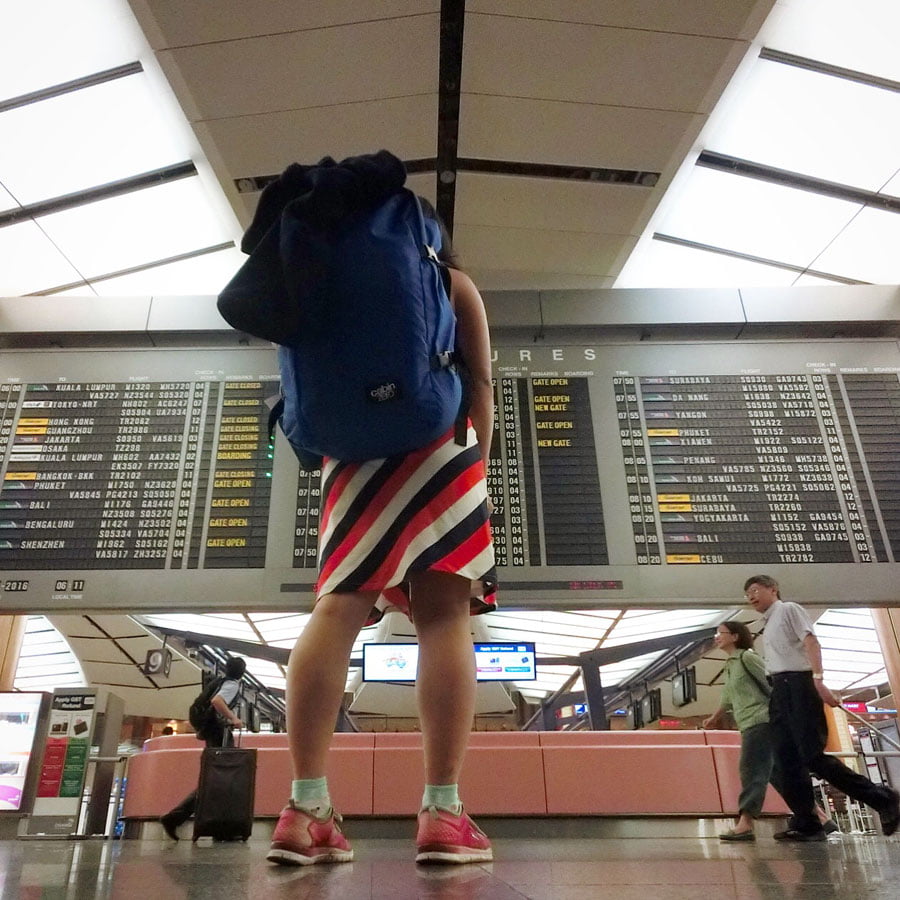
Empty tote bags and smaller bags – good for separating clean and dirty laundry, and also for sorting out your things in hostel rooms when you need to take all the stuff out of your backpack but don’t want to leave it around randomly.
A clothesline – for hanging up and airing your clothes in bunk beds. Can just be a piece of rope that you can repurpose, but it helps to have a few clothes pegs on hand as well.
Locks and spare locks – I carried around 6 locks with me in South America. I thought I was being paranoid, but I lost 3 locks mostly in Peru so it turned out to be a good move after all. I prefer number locks but I had key ones as backups, as well as a larger bike lock for chaining my backpack down when there weren’t lockers and I wanted to be extra careful
Tape – washi tape is good for scrap booking and keeping small objects like SIM cards and SD cards from disappearing, but some duct tape is good to as it is more durable
SIM card pin or paperclip – when you swap SIMs a lot, this is super useful to have and more sturdy than a earring wire. I usually stick mine to the inside of my phone case or wallet so it’s easy to pull out when needed
Large thin scarf – good for hot and cold weather, filtering out terrible smelling buses, hanging up for extra privacy in dorm beds or just prettying up a casual outfir for a night out
Shoes – I carried 3 pairs of shoes:
- 1 pair of runners/hiking shoes that I wore everywhere. I liked the low cut Timberlands because they are sturdy enough for hiking, and you don’t get made to take them off at some airports because they are not boots
- A dressier fold-up pair of ballet flats for nicer nights which is also space saving- I have the blue and pewter Yosi Samra from Just Tangy
- A pair of flipflops – I’d pay more for something hardy and thicker than your super cheap throwaway pair. Mine lasted an entire year of hardwearing
How much did I spend?

The question most people are curious about – how much did my Career Break cost? I’m not going to give you an exact breakdown of my expenditure because I don’t think people travel in the same way at all so it’s not really relevant to see the complete breakdown. Also, some of my numbers are also skewed by the fact that I do get sponsored travel opportunities from the blog so take that in consideration when looking at my figures.
In total I spent about S$45,000 – that works out to about S$2,800 per month, which is just under S$100 per day on average. This includes all my costs from transport, accommodation, food, souvenirs… everything I spent on the road and some stuff in preparation for the trip.
Is that considered a lot? I’ve had varying reactions but I think it really depends on your style of travel and how much you are willing to spend. It’s definitely not budget but neither do I think is it super extravagant. If you want budget options, why not check out my friends Sunrise Odyssey who managed to do Central Asia in 10 months for around S$10,000 or Pohtecktoes who did about 2.5 months in South America for less than S$7,000.
My plan was either to travel for a year or until my money ran out, whichever happened first, but I knew I didn’t want to be a flat-broke begpacker before I came back, so I decided to stop once I felt that my savings were running too low for my liking
Want to see a slightly more detailed breakdown?
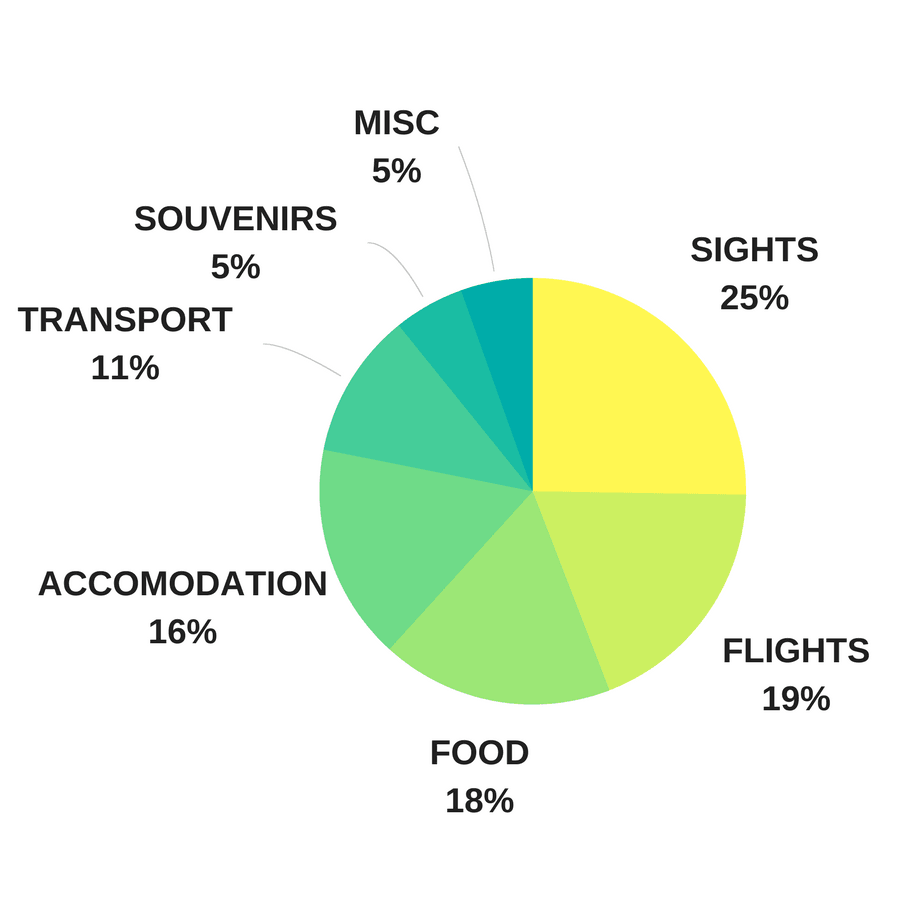
Sights – This cost the most because it included the small tours I did like the 3D2N to Uyuni Salt Falts, 2D1N to Machu Picchu and of course the expensive 8D7N Galapagos Cruise . It also includes expensive stuff like scuba diving (I did several dives in different countries) and the skydive I did in Kenya! Definitely could be reduced if I had been more judicious about what I spent on.
Flights – the best way to save is to not move around so much like I did! And also not to take too many detours – Kenya was a detour that I bought pretty last minute, as was Panama. This figure would actually have been much higher (I mean I took 57 flights – this averages out to about $150/flight which is just ridiculous) but I had some flights covered by media trips, as well as a handful of discounts from friends who worked in the airline industry. I paid for slightly over half my flights, an average of around $280/flight. Miles users will surely save a ton in this category!
Food – I ate out mostly so I probably could have saved a lot here if I cooked, but I like eating out, it’s part of appreciating the culture for me! My average food cost was about $20/day – I had a mix of street food and some fancy places
Accommodation – I was mostly doing shared hostel dorms, but I generally didn’t pick the cheapest hostels available – quality and location are pretty key factors for me. Cheapest countries I stayed in? Bulgaria, Istanbul, Bosnia & Herzegovina, Serbia, Bolivia. I had some sponsored accommodation, stayed with friends and sometimes had to fork out for an expensive hotel room, but my average cost for a bed per night came up to about S$20. You could definitely push this down if you couchsurfed, bunked with friends or picked hostels based on price
Transport – we’re mostly talking trains and buses here. Again like with flights, less moving around would mean more savings in this category.
Souvenirs – I definitely could have saved in this area as well, I spent a quarter of that money in Japan and Taiwan right at the beginning, but was much more judicious in Europe. I bought a fair bit of souvenirs from South America but mostly for the family. My coolest souvenir would probably be the Alpaca-wool poncho from Ecuador. The most useful one would be the notabag I bought in a museum shop in Vienna and actually carry around a lot nowadays.
Misc – these extra costs were largely due to the travel insurance and vaccinations as well as the Tourist Tax/Visa I needed to get for Galapagos and Bolivia.
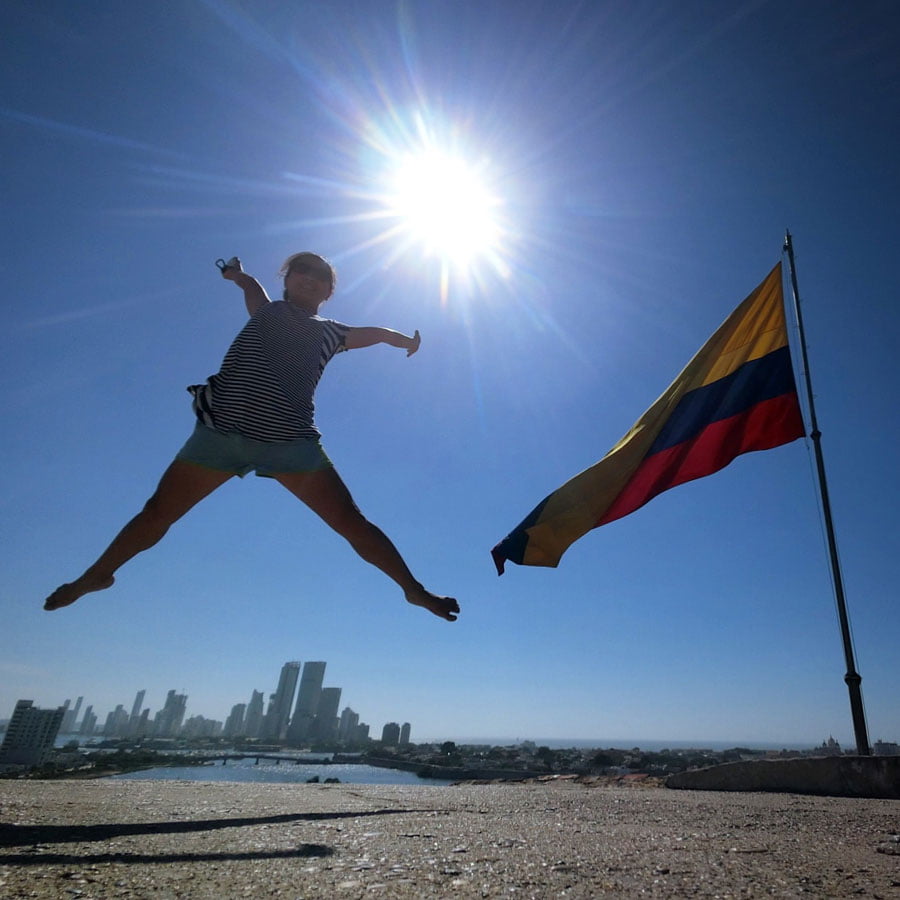
I talked a bit about how I was funding my travels when I announced that I quit my job , but now that I’ve actually gone through with it, I can give you a bit of a lowdown:
My Savings – this took the hardest hit because for the first time in my life I was seeing money go out of my account faster than it came back in. It honestly was a bit worrying seeing the money in my account deplete but you know what, totally worth it. I didn’t deplete my savings though – I came back with a decent amount left to cover my expenses for a few months while I figured out life and job hunting.
Freelance work – I took up a lot more writing jobs on the go, and I think I was pretty lucky in landing some jobs that just came to me randomly. In total I made about $17,000 from freelance work and sponsored blog posts in 16 months, which covered about 1/3 of my expenditure.
Sponsored stuff – I didn’t use my blog as much as I could have because I didn’t want to get tied down to too many commitments while travelling – let me just say that when it looks like I get something for ‘free’, you’re not seeing the work I put in behind the scenes, the long nights and some missed opportunities when I have to get shit done and can’t go out because of deadlines, so I tried to keep it minimal. But things like the opportunity to learn Spanish in Panama was pretty awesome, as well as the chance to explore Bucharest even if it meant having to take some detours and extra flight costs!

I’ve been back in Singapore for almost 2 months now at the point I’m writing this, and I’ve been absolutely busy. I started job hunting and have had a few interviews so far though nothing’s quite landed yet. I had listed my blog and Career Break in my professional resume for the first time and the response has been pretty good so far – it’s a great talking point and according to one of my interviewees, having ‘passion projects’ was a plus point in my favour. I honestly wasn’t expecting to even land interviews so early, but I’ve been lucky to have a strong network of supportive friends who were happy to throw recommendations my way when I caught up with them.
For now I’ve taken up some freelance and contract work on the side to earn some cash while job hunting, and I am trying to catch up on blogging -– which is an entire job in itself. I could probably not travel for a few years and still have a ton to write about!
Update 2019: I’m back doing full-time work and being an Occasional Traveller 3 years since my Career Break and after about 2 years of freelancing. It was a matter of the right opportunity popping up at the right time :)
I definitely don’t regret taking this time off . I think the Career Break has shifted my mindset in terms of how I think about myself and my travels for the better. I’m a lot less willing to settle – which is a good and a bad thing, and I think I’ve definitely grown up a little more. Experiences on my travels have made some things clearer to me, that I don’t want to be a digital nomad nor make my blog my main source of income for example, and that perhaps I want to cast my net beyond Singapore shores and that full-time work in an office isn’t the only way to make a living.
If you are pondering taking the same step, let me just remind you – you do you . Don’t quit your job to travel just because it looks like I had a great time, do it because it’s something you want to experience or achieve. Everyone has their own journey and adventures in life, and I hope you have amazing ones whatever you decide! I’m happy to try and answer questions or even just hear about your own experiences if you took a career break too – just drop them in the comments or drop me an email if you prefer some privacy.
Catch up on all my Career Break Travel posts or see what tips I have for busy working professionals who want to indulge their love for travel .
What NOT to pack on your next holiday

Trip Planning 101 – How much should you plan for?

Essential items for surviving the communal hostel toilet
Monday 23rd of October 2017
I read about your blog on Eng Beng's website, and just fell into a rabbit hole of reading your archives - so much good stuff. I went to South America for five months this year after quitting me job, and wished I took a whole year off like you did, instead of just a few months. Also wished I was more organised, like you, hah. Here's to more adventures!
Jaclynn Seah
Thanks Yan Qin – Well 5 months is still a good amount of time and man your blog photos are making me miss South America so much! Cheers to more adventures for you and me and everyone :)
Tuesday 15th of August 2017
I am moving to singapore soon for work during Oct! cannot wait to come to this great country! :)
Wednesday 16th of August 2017
awesome! hope you like it here :)
Sunday 6th of August 2017
This is a nice comprehensive post.
I have only done two separate mini-breaks that last for 1 month each (first time covering 11 Scandinavia/Europe countries, second time covering the Middle East), and agree that such breaks wouldn't necessarily harm your career and is a good talking point in interviews.
Great to hear you caught the migration. I was a little too early for the migration while I was in Tanzania this year, but Africa safari is such a spectacular experience I just know I'll be back for more!
Envy your South America leg the most—that's one place I have always felt needed months if not years to do justice, so I haven't checked them out yet. Bolivia, Ecuador, Colombia & Atacama are all high on my wish list, but especially Patagonia in Southern Chile...
All the best for the job hunting. Pretty sure you'll land something very soon!
Thanks Andrew! I have to admit I"m kinda raring to go again :p Thank you for the well wishes!
Scandinavia and the Middle East are places I haven't really covered properly! Definitely for next time... Scandinavia seemed a bit too expensive and I've heard some really cool things about Iran and its surroundings. Central Asia is also pretty high on my list :) There's also so much of Africa to see... man my list just keeps growing!
South America I do agree you need a little time to do, just because the country is so big and getting around takes time...

- Jobs Abroad

Career Break Travel: Breaking Free of the 9 to 5 Grind

Jenny is a globetrotting writer and the founder of Digital Nomad Girls, a community for location ...
- button]:border-none [&>button]:bg-white [&>button]:hover:cursor-pointer [&>button]:hover:text-cyan-400"> button]:hover:text-cyan-400 [&>button]:bg-white hover:cursor-pointer" height="1em" width="1em" xmlns="http://www.w3.org/2000/svg">
Taking a break from work without consequences. If you’ve been feeling stuck in a rut at work lately, like you’re living the same day, week, and month, over and over again, it might be time to mix things up with a career break. Long gone are the days when gap years were reserved for students only! Taking a break from work is now more popular and acceptable than ever before. You’re never too old, or too far into your career to take a career break and interrupt the boring routine.
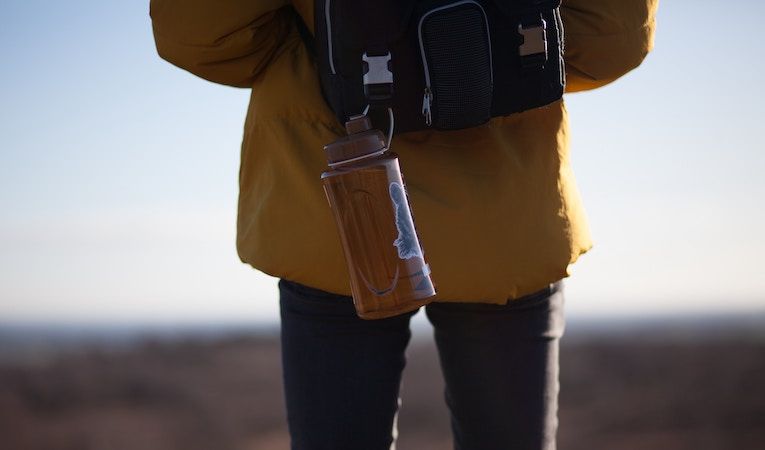
Take a chance with these career break ideas.
Contrary to what you might fear, a career break doesn’t have to put your career on hold. Instead, see it as a way to add extra skills, gain a new perspective, and spice up your life if it’s gone a little stale lately. Maybe you’re totally burnt out and ready to change your career completely, or maybe you still love your job but are feeling a little unfulfilled. There are many reasons to take a career break.
Taking a career break or adult gap year is nothing to fear and there are many programs and organizations out there that can help you have the time of your life. There are no limits to what you can do on your career break: volunteer with animals, teach your skills to others, learn a new language, or start a business—the choice is yours.
A well-deserved break from your career will benefit your health, spirit and even your employer. Take a step back from the noise and busyness of the modern working world and jump into your career break adventure, no matter how high up the career ladder you’ve climbed.
In this article, we’ll show you how to break free of the 9-to-5 grind with some incredible career break ideas.
[Download our FREE eBook for even more tips & tales from first time workers abroad]
Career break travel faqs, 1. when can i take a career break.
In your 30s or 40s, you’ll most like have already gotten into a groove in your career and might feel less comfortable taking a career break or that it’s never the right time. If you’re worried you missed the gap year train back when you were fresh out of college, then don’t worry, you can take a break at any time in your career. The biggest mistake people make when it comes to career breaks is not taking one at all and missing out on the experience of a lifetime.
For a long time, gap years were reserved for youngsters, fresh out of high school or university. But with the job market and education landscape changing dramatically, it’s not the case anymore. Employers value life experience, language, and problem-solving skills, all of which you can learn on a career break abroad.
If you’re taking a career break at 30, you could still be eligible for a working holiday visa in Australia, Canada, or other countries. Working holidays can be a great way to help finance your gap year and explore a new country at the same time.
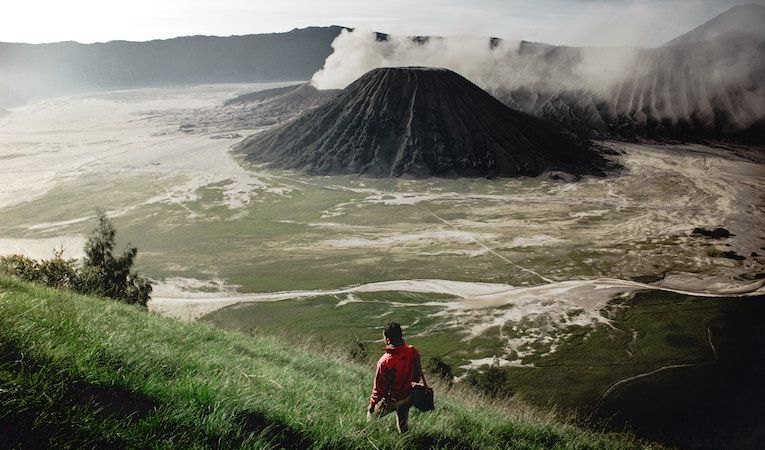
Taking a break from work can actually be an ultra-productive path if you do it right.
Taking a career break at 40 is just as feasible as during your 20s. You might just have to take a little extra time to prepare. It might even be easier to take a career break, because your employer already values and trusts you and might even hold your job for you if you just need a temporary change. Of course, those in their 40s will have more responsibilities, but none of these should stop you from taking a career break. Houses can be rented out, cars and belongings can be sold, and pets can be looked after by friends and family when taking a break from work. Don’t let these ‘obstacles’ hold you back.
2. What are the benefits of a career break?
Here are some of the biggest benefits of taking a career break at 30 or later:
- Travel!! Of course, you could decide to take a career break and stay at home, but where’s the fun in that? Career breaks are the perfect opportunity to fit a bit of adventure and travel into your life and shake up the routine. You can choose to travel to one country and really immerse yourself, or to travel around a few countries for a few different projects—it’s totally up to you.
- Give back! One of the major benefits of taking a gap year a few years into your career instead of right out of college, is that you’ll have a lot of skills and experience to offer. It gives you the chance to give back. Taking a career break at 40 means you can use your years of work experience to help people and organizations in a meaningful way, giving back to communities and using your leadership skills to create change and make a difference.
- Learn new skills. Just because you’re taking a break from work, doesn’t mean you won’t be adding skills to your resume. Travel is one of the most transformative experiences in life and you will learn so much about yourself and other cultures and communities, as well as gaining new hands-on skills that will make your resume stand out from the crowd. New languages, volunteering, or teaching experience are all highly valued skills in the job market.
- Gain fresh perspectives. Working life with all its responsibilities can be stressful, and burnout is a reality for people throughout the career ladder. So, use this as a chance to get a fresh perspective! Nothing will refresh you and give you a new perspective on your life and career like taking a career break abroad. Immersing yourself in new cultures, meeting new people and crossing a few major items off your bucket list will re-energize you in no time and bring the excitement back into your career again.
3. What are popular career break ideas?
When it comes to picking your career sabbatical, you’re spoilt for choice with all the options available. Most adult gappers have the drive to explore, learn and give back to others in common. Whether it’s teaching English in Korea, joining an archaeological dig in Italy , or preserving rainforests in Costa Rica , the possibilities are endless and the right program for you is out there . Taking a break from work has never been easier (or full of more fun possibilities!).

Live your career break at 30 dreams, maybe even in an actual fairy castle?
Volunteering
Volunteering has long been a popular career break option, and for good reason. Giving back to others can add a lot of meaning to your career break and the skills you learn will look great on your resume. Stepping out of your comfort zone will make you grow as a person and professional. Volunteering can also make taking a sabbatical from your life much more affordable, as many programs offer you room and board in exchange for your help.
- Check out these popular volunteering opportunities .
- How to find paid volunteer work abroad
Learning languages
Fancy a bit of ‘Eat, Pray, Love’ during your career break? Why not step into Elizabeth Gilbert’s footsteps and spend part of your gap year learning a new language amongst locals? If you’ve always dreamt of learning Italian in Rome, or Spanish in Argentina, now’s the time!
Learning a new language is fun, challenging, and definitely takes you out of your comfort zone. And while you might not get completely fluent during your career break, adding some new language skills to your CV will impress future employers and can even open up whole new opportunities. Spanish is among the most popular languages to learn during a career break as you can use it in so many different countries. Other popular languages are Mandarin, Japanese, and Arabic, but the choice is yours and you can learn a new language in every country in the world.
- Check out some popular Spanish learning experiences.
- How to choose the right language school abroad
Short-term jobs abroad
If your budget is limited and you can’t take a whole year off to travel, learn or volunteer, don’t despair. There are a ton of short-term jobs abroad that you can use to supplement your travel fund. A popular option is teaching English abroad, and there are lots of programs out there for older gappers. Make sure you talk with your teaching program before you book to find out about age restrictions in different countries.
- Find some well-paid popular jobs abroad here
- Temporary jobs abroad you’ll love
4. What are potential career break pitfalls?
Before blindly taking a break from work, there are of course many things to consider. Adult gap yearers tend to have more responsibilities than their college or high school counterparts. Do you have a family, children, a house, or a mortgage? Don’t worry, there are programs out there that cater to any type of career break, and many people have successfully taken their kids and partners along on their sabbatical break too.
Here are some of the most common worries amongst adult gappers and how to avoid or overcome them:
Financing your life sabbatical
The number one thing that prevents adults from taking a career break is the worry of how to fund it. Understandably, financing your career break will be of concern, but money should not hold you back from living your dreams. As we explored above, there are many different takes on career breaks, and working abroad is a great option among them. Leaving your stale 9-to-5 behind to move across the world and take a different job does not mean you’re not doing it right. In fact, many people get restless after a few months of ‘just travel’ and crave finding meaning in work, which could be on a volunteer or paid basis.
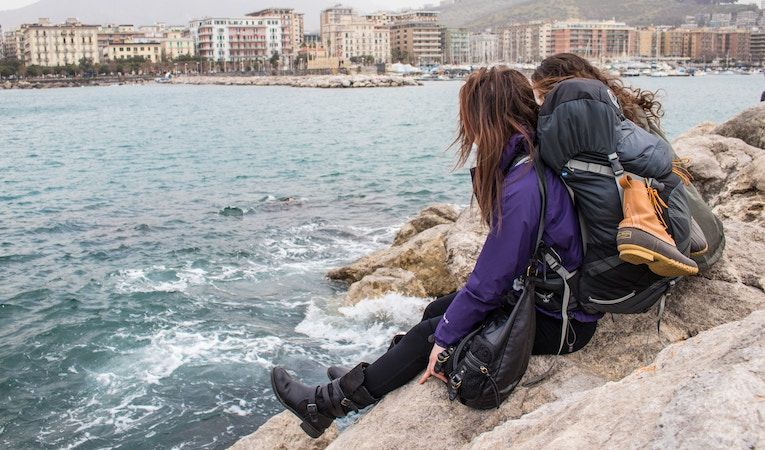
It’s not too late to have the backpacking adventure of a lifetime.
No matter whether you’re planning to work during your career break or not, you should definitely make a budget plan to avoid having to return after a few months because you’ve blown your budget (it happens!). Depending on how you design it and which program you pick, career breaks for adults can be costly, so it’s important to write down exactly how much you’ll need every month and add a buffer for emergencies and special occasions.
The key to financing your gap year is to plan ahead and start saving as early as possible while you’re still in your 9-to-5 job. Write down what you spend your money on every day, week and month and then find clever ways to cut down your costs. Do you really need Netflix, Hulu, and cable? You’ll probably want to downsize before taking your career break, so start sorting out the stuff that you don’t need anymore, then sell it and add the proceeds to your travel fund.
Not every career break has to cost the world, but start saving early, look for a job abroad if necessary, and choose a country where the economics fit your budget.
Impact on your career
First off, a career break absolutely doesn’t have to hurt your career and, if done properly, can actually be amazing for it. Before you quit your 9-5 and jet off into the sunset you should really get clear on why you want to take a break, what kind of experiences you’re after and what you want to learn and add to your skillset.
Travel teaches you a whole host of soft and hard skills, and you’ll certainly strengthen your resilience and problem-solving skills. Talk to your employer about whether they offer a sabbatical program that would allow you to take a year of unpaid leave and guarantee that you could return to your job after the break.
To make sure you keep in the loop during career break travel, you can subscribe to magazines or journals in your field and stay connected with your network via LinkedIn while you’re abroad. You could even attend networking events in your new destination during your career break to grow your professional network in your field.
Lack of planning and direction
One of the big dangers when taking a career break is to not plan it properly, get lazy and then not make the most of it. While it’s tempting to take the chilled approach, if you’re after a life-changing experience and an adventure that will add some pizazz back to your life, you can’t just wing it. Taking a year off to catch up on sleep, binge watch The Simpsons reruns, and hang out with your mates is neither going to re-energize you nor impress any employer. A certain amount of spontaneity is great, but you should always have a plan in place to help you avoid wasting your year on meaningless activities and chores.
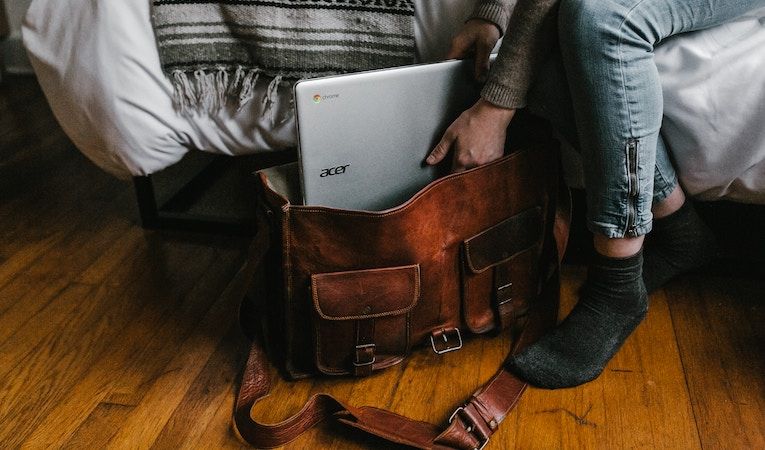
Instead of a career travel break, why not take your work with you? Try out the digital nomad life!
You can avoid wasting precious time on your career break by making a list of all the experiences you’d like to have, skills you’d like to learn or different ways you’d like to push yourself. Have you always wanted to hike the Inca Trail in Peru? Why not combine that with a language course in Lima and volunteering in a rural school? If you’ve become a bit too comfortable in your 9-to-5 routine, write down five ways that you want to really step out of your comfort zone, like moving to a country where you don’t speak the language or working with people who are completely different to you.
[ Prepare Early: Download This Planning Timeline We Made Just for You ]
Most-loved locations for career break travel.
When pretty much the whole world is your oyster, deciding where to travel on your career break can be quite a big task, and you might find yourself wanting to go everywhere! Most people pick a destination that they’ve had on their bucket list for a while, but you should also take into account the type of career break you’re looking for, as well as visa requirements and budget, because some career break travel destinations are much more affordable than others.
Thankfully, you can find programs that will help you get set up in almost every country in the world, so get your globe out and pick your dream location.
Here are some of the most-loved destinations for 30-something travel:
1. Thailand
The land of smiles is high on many travelers’ bucket lists and is also one of the most popular career break destinations. There are countless opportunities in Thailand, from conservation work to teaching English. Expect warm and friendly locals, and a rich and fascinating culture alongside turquoise seas and delicious food. Thailand really does have it all, along with an incredibly affordable price tag.
Recommended program
- Greenheart Travel is on a mission to make the world a better place by placing dedicated people with a spark of wanderlust in meaningful projects around the world. From language immersion to volunteering, teaching English to environmental awareness campaigns, Greenheart has projects in over 30 countries.
As far as career break destinations go, Peru really has it all. A rich and fascinating history, breathtaking landscapes, welcoming culture and even llamas. And, of course, a trip to Machu Picchu shouldn’t be missed on any career break in Peru.
- Love Volunteers connects passionate volunteers with communities around the world. They provide some of the most affordable volunteering opportunities available by working closely with local organizations and making sure the money goes where it should. From Albania to Argentina and Palestine to Peru, Love Volunteers has the right program for you.
Ah, Bella Italia for a career sabbatical! Who hasn’t dreamt of spending a summer in Tuscany eating pizza and pasta while learning Italian or volunteering at a vineyard? Everything’s possible on a career break in Italy and it’s also a great jumping off point for exploring the rest of Europe while you’re there.
- Geovisions offers excellent au pair programs in Italy—if you love kids or want to become part of a family, this job’s for you. Their programs are open to American, Australian, Canadian, Kiwi, Irish and British participants, and salaries and stipends vary.
[ Browse ALL Jobs Abroad for Career Breakers ]
Your career sabbatical is just around the corner.

Get ready to meet a new version of yourself—one that embraces adventure and defines success on their own terms.
Use your career break travel to re-evaluate what’s most important to you in your personal and professional life, then refocus and get excited about new opportunities. You deserve to take a break and make the best out of your life. So, take the time to explore this beautiful world, destress from your regular work, and get a new lease of life.
Hopefully, your wanderlust has been stoked and you’re ready to take a break from the same old daily routine of your 9-to-5 job with a career break adventure of a lifetime!
Get Matched with 5 Work & Travel Programs for Free →
Related articles.

By Jennifer Lachs | July 15, 2024
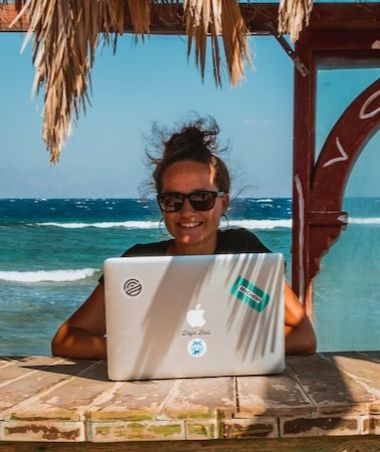
By Farryl Last | July 15, 2024

By Jennifer Lachs | June 6, 2024

By Julie Ball | June 4, 2024
Popular Searches
Recommended programs.

2583 reviews
International TEFL Academy

1109 reviews
Premier TEFL
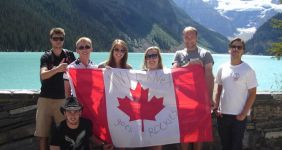
INTERNeX Pacific

182 reviews
Greenheart Travel
Top Jobs Abroad Providers
Popular opportunities to check out
Test classroom theories in the "real world" with Instituto Hemingway
Search + apply for tefl internships & our 100s of jobs online & abroad, get tefl certified & explore the world as a paid english teacher, the easy way to work & travel. use promo goabroad to get 100$/€/£ off, for travelers, travel resources, for partners.

© Copyright 1998 - 2024 GoAbroad.com ®
- Study Abroad
- Volunteer Abroad
- Intern Abroad
- Teach Abroad
- TEFL Courses
- Degrees Abroad
- High School Abroad
- Language Schools
- Adventure Travel
- Online Study Abroad
- Online Volunteer Programs
- Online Internships
- Online Language Courses
- Online Teaching Jobs
- Online Jobs
- Online TEFL Courses
- Online Degree Programs

TrekFunTrek
Never stop exploring
From Corporate to Solo Travel: A Career Break Experience

- Case Studies
- Solo Travel
Unlocking Freedom: Embark on a Career Break Journey from Corporate to Solo Travel:
Key takeaways:.
1. Taking a career break to travel solo can provide valuable personal and professional growth opportunities.
2. Transitioning from a corporate environment to solo travel requires adaptability and resourcefulness.
Related Travels

3. Solo travel allows for increased self-discovery and the chance to step out of comfort zones.
4. Planning and budgeting are essential when embarking on a career break for solo travel.
5. Networking and building connections while traveling can lead to unexpected career opportunities in the future.
What motivated me to make the transition from a corporate job to solo travel?
After years of working in a corporate job, I found myself feeling burnt out and unfulfilled. The daily routine of commuting to the office, sitting at a desk for hours on end, and dealing with office politics had taken its toll on me. I yearned for adventure, freedom, and new experiences. The idea of solo travel started to appeal to me as a way to break free from the monotony of my corporate life.
I was also inspired by stories I had heard from friends and colleagues who had taken career breaks and embarked on solo travel adventures. They spoke about how their journeys had opened their minds, broadened their perspectives, and helped them discover new passions and interests. This sparked a desire within me to step out of my comfort zone and explore the world on my own terms.
How I planned and prepared for my career break experience
Planning and preparing for my career break experience involved careful consideration of various factors such as finances, logistics, and personal goals. Firstly, I created a budget to determine how much money I would need for my travels. This involved saving up a significant amount of money over several months in order to cover expenses such as flights, accommodation, food, transportation, and activities.
I also researched different destinations that interested me and created an itinerary based on my preferences. This involved researching visa requirements, local customs and traditions, safety considerations, and popular attractions or landmarks in each destination. Additionally, I made sure to inform my employer about my decision well in advance so that they could make necessary arrangements during my absence.
The challenges I faced during my solo travel journey
While solo travel was an incredibly rewarding experience overall, it did come with its fair share of challenges. One of the biggest challenges I faced was loneliness. Being on my own for extended periods of time in unfamiliar places sometimes made me feel isolated and homesick. However, I learned to overcome this challenge by actively seeking out social interactions with fellow travelers or locals through joining group activities or staying in hostels.
Another challenge I encountered was language barriers. In some countries, English was not widely spoken, making it difficult to communicate and navigate my way around. To overcome this, I relied on translation apps, basic phrases from guidebooks, and the kindness of locals who were willing to help me despite the language barrier.
How taking a career break and engaging in solo travel impacted my personal growth and development
Increased self-confidence and independence.
Taking a career break and embarking on solo travel had a profound impact on my personal growth and development. One of the most significant changes I experienced was an increase in self-confidence and independence. Being solely responsible for planning my itinerary, navigating unfamiliar places, and making decisions on my own forced me to step out of my comfort zone. This newfound independence allowed me to trust myself more, take risks, and overcome challenges with resilience.
Expanded cultural awareness
Solo travel also provided me with the opportunity to immerse myself in different cultures and gain a deeper understanding of the world around me. From exploring local markets to participating in traditional ceremonies, I was able to witness firsthand the diversity of customs, traditions, and beliefs across various countries. This exposure not only broadened my perspective but also fostered empathy and respect for different ways of life.
The cultural or language barriers I faced while traveling alone and how I overcame them
Language barriers: learning basic phrases.
One of the biggest challenges I encountered while traveling alone was the language barrier. In many countries, English was not widely spoken, making communication difficult at times. To overcome this hurdle, I made an effort to learn basic phrases in the local language before arriving at each destination. This simple gesture helped me connect with locals, navigate public transportation systems, and ask for directions when needed.
Cultural differences: Embracing curiosity
Another obstacle I faced was navigating cultural differences that sometimes led to misunderstandings or discomfort. However, instead of letting these differences discourage me, I embraced curiosity as a way to bridge gaps between cultures. By asking questions, observing local customs, and showing respect for cultural norms, I was able to navigate these differences with ease and foster meaningful connections with people from diverse backgrounds.
Memorable experiences or moments from my career break journey
Witnessing the sunrise at angkor wat.
One of the most memorable experiences during my career break journey was witnessing the breathtaking sunrise at Angkor Wat in Cambodia. As I stood among hundreds of other travelers, the sky gradually transformed into a canvas of vibrant colors, illuminating the ancient temple complex. The tranquility and beauty of that moment left an indelible mark on my soul, reminding me of the power and wonder of nature.
Trekking through the Himalayas
Another unforgettable moment was trekking through the majestic Himalayas in Nepal. The rugged terrain, snow-capped peaks, and serene mountain villages provided a sense of awe and adventure like no other. Each step challenged me physically and mentally but rewarded me with breathtaking views and a profound sense of accomplishment. This experience taught me resilience, perseverance, and the importance of embracing challenges to achieve personal growth.
Influence of this career break experience on work-life balance and future career goals
Prioritizing work-life balance.
The career break experience had a significant influence on my perspective towards work-life balance. Through solo travel, I realized the importance of taking time for myself, exploring new passions, and nurturing personal relationships. This newfound understanding has motivated me to prioritize work-life balance in my future career endeavors by seeking opportunities that allow flexibility and promote overall well-being.
Exploring new career paths
The transformative nature of my career break journey also sparked a desire to explore new career paths aligned with my newfound interests and values. Experiencing different cultures and engaging in diverse activities during my travels opened my eyes to a world of possibilities. I am now more open-minded and willing to step outside my comfort zone when it comes to pursuing fulfilling and meaningful career opportunities.
In conclusion, transitioning from a corporate career to solo travel can provide individuals with a transformative and enriching career break experience.
Can you take a sabbatical from work to travel?
Because sabbaticals usually last for a significant amount of time, employees often have the chance to engage in educational or professional growth experiences. This could involve writing a book, enrolling in a course, traveling, or participating in various other activities.
Will a career break damage my career?
Does taking an extended break from work have a detrimental impact on one’s career progression? Taking a prolonged break will create a gap in your work history, which may cause some employers to question your readiness and the relevance of your skills and experience. However, it is important to note that not all employers share the same perspective on this matter.
What counts as a career break?
A career break typically lasts from one month to two years, with the most common duration being six months to two years. There is also the option of taking a shorter career break of less than one month, which allows individuals to explore career break activities without making a long-term commitment.
Does taking a sabbatical hurt your career?
Taking a sabbatical will actually benefit your career, contrary to popular belief. The advantages of taking a sabbatical are numerous and even backed by scientific research. A study compared the life satisfaction, stress levels, and overall well-being of individuals who took a sabbatical versus those who did not, and the results were in favor of those who took a sabbatical.
How much money do I need for a career break?
Although it may not be essential for everyone to have three to six months of expenses saved up, Ginty recommends having a financial cushion to rely on. If it takes a significant amount of time to find a job after a career break, it is important to have readily available savings to support yourself during an extended period of unemployment.
What professions can take a sabbatical?
A sabbatical refers to a prolonged break from work in order to achieve a specific goal, travel, or fulfill a personal desire. It is a common practice in higher education and institutional careers like academia and science, where employees are often granted paid sabbaticals as a part of their job benefits.
Share this post
- Articles >
- Career Breaks >
How to Add a Travel Career Break to Your Resume
Search a multi-stop route.
The idea of taking a career gap to travel – especially mid-career rather than at the beginning – has conjured up negative assumptions among employers. Sometimes taking a career gap can create the illusion that the individual in question is trying to ‘escape’ or is ‘taking a step back’.
While employers’ attitudes towards career break travel are changing, some of these misconceptions still linger. As career-break travelers, we need to be the ones to start showing how this unique personal development experience translates into something special during the recruitment process.
You shouldn’t shy away from including a travel career break on your resume. The question is, how can you use it to your advantage? How do you demonstrate to employers the amazing benefits of having taken time out to travel?

Why you should include travel on your resume
At a time when job searches are becoming ever more competitive, employers look for those distinguishing factors that set you apart. The personal development you gain from travel fits into this vacuum perfectly.
Kate Wicklow is Policy Manager at GuildHE, a membership organization in the UK for the heads of higher education institutions. She believes that including a travel career break on your resume is the right thing to do.
“It’s an excellent talking point for an interviewer to find out more about you, and shows you are not afraid of the unknown and change,” she says. “It also helps to explain unemployment gaps, which are seen as a negative without explanation.”
It’s not just about your personality and interests either. Travel enables you to develop attributes that will make you far more effective in the workplace.
Kate continues: “People who take career breaks to focus on their personal wellbeing are confident, self-motivated and would be an asset to most organizations.”
“It’s the perfect example of personal leadership.”

What have you gained from travel that is relevant?
We’ve all heard the clichés that travel makes you grow as a person. That it ‘expands your mind’ or ‘pushes you outside your comfort zone’.
Spend time reflecting on what these concepts actually mean to you.
While these soundbites may be true, they don’t really give any solid examples of the skills and knowledge you have gained. You need to think tangibly when incorporating travel into your resume.
In my case, ‘expands my mind’ translated into becoming more creative. I saw and experienced more, which meant I had a wealth of information to draw upon when solving problems or producing design work. After my own travel career break, I was able to land my dream job by being upfront about it.
Traveling definitely ‘pushed me outside my comfort zone’, and that made me calmer. I became accustomed to dealing with unexpected situations. Being calm and confident now makes me a good team worker.
Thinking in these terms will enable you to translate your experiences into language that employers understand.
Begin by simply writing down a list of concrete examples of the skills and knowledge you have developed.
You don’t need to wait until you’re back home to do this. If you keep a personal development record as you travel, it will be a powerful tool to use later when refining your resume.
Al Powell, Representation & Democracy Manager at Edinburgh University Students’ Association, believes this kind of experience can give job candidates an advantage. He says: “I know that travel can lead to skills and knowledge such as logistical management, a desire to learn and improve, adaptability, teamwork, and the ability to network.
“It’s great when you’re reading an application or speaking to someone at interview and they’ve really thought about that.”

How do you make your travel experience a unique selling point?
Analyzing your development is an important first step, but how does your travel experience actually make you stand out against someone with the same set of skills and knowledge? It’s one thing to list attributes like ‘creativity’ or ‘teamwork’, but you need to provide more to back it up.
Your experiences of travel during your time away from work will have given you hundreds of different examples that really do illustrate that these are transferable skills. Write down some specific instances; this will prepare you to answer any questions that come your way later.
For example, my travel career break made me better at networking. How? In the year I spent outside the UK, I must have met hundreds of new people. I shared dorm rooms with countless strangers and became increasingly comfortable with approaching people. Sharing my story, asking questions, and then building relationships meant that we both took something away.
I did this every day, probably much more often and much more tangibly than the other candidate who spent a year ‘building relationships to work collaboratively’.
Amrita Devaiah is Head of Civil Service Live at the UK Cabinet Office. She says: “Taking a career break to travel should be something you shout about on your CV.”
“Experiencing different cultures and traveling to new and exciting places builds your understanding, opens your mind and, I’ve found, generally makes for a stronger candidate.”
“If you’re able to articulate at interview how your travel has bolstered your skills and added to your expertise, it’s even better.”
How to structure travel into your resume
There’s a common temptation to stuff travel away into a ‘hobbies and interests’ section at the end of your resume. Don’t do this. All it does is reinforce the notion that travel is irrelevant to career development. Furthermore, it completely downplays the benefits.
Don’t be afraid to structure your travel career break into the employment history section of your resume. This gives it the gravitas it deserves and makes an explicit connection between your travel experiences and the workplace.
Another common mistake is to feature a travel career break among employment history, but hide it at the bottom. Instead, include it in flow with your timeline. This way, you’re showing how it fits into your arc of personal development. This tells a better story.
Graham Atkinson, Founder of Atkinson HR Consulting, explains the advantages of being open and sincere. “It’s important experience, so talk about the challenges and learning that come from it,” he says. “Be clear about the timeline on your resume and have a good, honest narrative about gaps between employment.
“Be proud of traveling gaps, and be clear about what you’ve learned and what it says about you as a person.”

Don’t overplay it
It’s important to make the case for how travel makes you a better employee. At the same time, be careful not to overemphasize it. Think of travel experience as a vital cog in a functioning machine, but not the engine.
Graham continues: “Use it as a talking point where possible, and if there’s a good practical example from your travels that links to the person specification then apply it. It could be time management, project management or communication, for example.”
“Overall, I’d advise not to overplay it, but equally not to shy away from it and talk about how it will help make you a great candidate for the role.”
I landed an amazing job after my travel career break.
Before my travel career break, I entered a sabbatical agreement to return to my job afterward. Three weeks before returning home, however, I received the shocking news that I was going to be made redundant.
I found myself thrown in at the deep end of a job search I wasn’t prepared for. But once I overcame the initial panic, I was able to land a dream role at a leading UK charity. I did this by applying some simple principles:
I quickly discovered that if I omitted my career break from my resume or avoided talking about it, I would get asked funny questions.
There was also a knock-on effect of making my redundancy seem more conspicuous. As soon as I preempted this and tackled both issues upfront and positively, I saw more progress.
Recognizing this shift, I decided to embrace my travel experience. I updated my LinkedIn profile to show my travel career break, detailing the benefits to my personal development. I made it an integral (but not the principal) feature of my resume. I talked candidly about it in interviews.
In the end, the job I got was the one for which I championed my travel experiences the most throughout the process. Looking back now, I don’t know what I was ever worried about.
Thinking of taking a sabbatical? Read more about why a travel break can be the best career move you’ll ever make.

- How to Start Planning Your First (Or Next) Career Break Today (Using 5 Simple Steps) with Cali O´Connor
by Jason Moore
Have you thought about hitting pause on your career to travel the world but are unsure how to make it a reality? It’s not as unattainable as you may think!
Cali O’Connor shares her experience of taking multiple career breaks and offers 5 practical steps to start planning your own career break today.
Cali is a former chemical engineer who traded her career in the oilfield for a life-changing adventure of quitting her job to travel around the world. Now, she helps working professionals find clarity in their lives by taking a career break that gives them the freedom to travel, explore, and realign with their life goals.
Whether you dream of quitting your job or taking a temporary pause, this episode will give you the confidence and strategies to take that leap. You’ll hear about her biggest mistakes during her first career break (and how to avoid them), insights on overcoming common fears such as financial insecurity and leaving a stable job, travel advice to save time and money, and lessons on concurring travel burnout.
If you could take a career break tomorrow, where would you go, and why? I’d love to hear your thoughts, and I hope you’ll share them by sending me an audio message.
Premium Passport:
- Get ad-free episodes, exclusive content, and access to all episodes for only $3/month. Subscribe now!
Tune In To Learn:
- What led to leaving her career and how she was able to get out of the “achiever” mindset
- The most important but obvious step in taking a career break
- The purpose of having goals for your time off
- Insight on when to start your career break and deciding how long to go for
- How to budget and financially plan for long-term travel
- Advice on talking to your boss about your decision
- Her experience working for a hostel and why they’re not just for young travelers
- 3 places she’d visit again in a heartbeat
- And so much more
- Join Zero To Travel Premium Passport
- Sign up for our FREE newsletter
- Visit Cali’s website
- Listen to her podcast
- Follow her on Instagram
- Learning Through Travel: Gap Year, Career Breaks, and Beyond w/Jennifer Miller from BootsnAll.com
- Sherry Ott from Meet, Plan, Go! on Taking a Career Break to Travel
- Lessons from Quitting a Job and Selling Everything to Motorcycle Around the World with Mike Barr
Thanks To Our Sponsors
- Babbel – Learn a new language with Babbel! Visit babbel.com/zerototravel to get up to 60% off your subscription.
- Women Who Travel Podcast – Pack your bags and go on a journey with the Women Who Travel podcast.
You're almost there!

Drop your email below so we can send your FREE course!
Success! Now check your email to confirm your subscription.
There was an error submitting your subscription. Please try again.
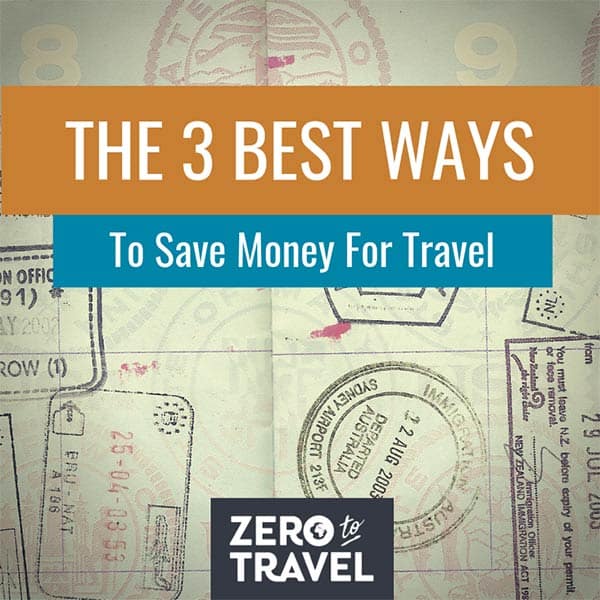
Want to Travel More?
You need a plan. Sign up to access this mini-course, get exclusive content and join our amazing community of travelers. It’s all FREE!
You're in! Check your email for your free guide!
Recent posts.
- Travel Legend Rick Steves
- From Expat to Digital Nomad: Finding Your Travel Rhythm, Balancing Burnout, and the Digital Nomad Lifestyle with Kristin Wilson
- From $12 in Savings to Living Your Travel Dreams with Matt Fetbrandt
- How to Live Your Best Travel Life (Practical Strategies and Mindsets That Work) with Mike Savas
Recent Comments
- nck crack without box on Road Tripping Europe To India : Daily Life On A Land Rover Overland Adventure
- Nora on Turn Travel Into A Lifestyle With Goats On The Road
- Jason Law on Top 10 Road Trip Albums With Jason Law from Festy GoNuts
- Svanna Clariot on Atlas Obscura: Curious World Wonders
- Kylie on Hitchhiking: Myths, Facts and Beyond
- September 2024
- August 2024
- February 2024
- January 2024
- December 2023
- November 2023
- October 2023
- September 2023
- August 2023
- February 2023
- January 2023
- December 2022
- November 2022
- October 2022
- September 2022
- August 2022
- February 2022
- January 2022
- December 2021
- November 2021
- October 2021
- September 2021
- August 2021
- February 2021
- January 2021
- December 2020
- November 2020
- October 2020
- September 2020
- August 2020
- February 2020
- January 2020
- December 2019
- November 2019
- October 2019
- September 2019
- August 2019
- February 2019
- January 2019
- December 2018
- November 2018
- October 2018
- September 2018
- August 2018
- February 2018
- January 2018
- December 2017
- November 2017
- October 2017
- September 2017
- August 2017
- February 2017
- January 2017
- December 2016
- November 2016
- October 2016
- September 2016
- August 2016
- February 2016
- January 2016
- December 2015
- November 2015
- October 2015
- September 2015
- August 2015
- February 2015
- January 2015
- December 2014
- November 2014
- October 2014
- September 2014
- August 2014
- February 2014
- January 2014
- December 2013
- November 2013
- October 2013
- September 2013
- Destinations & Culture
- Digital Nomad
- Inspiration
- Is It Worth It?
- Travel Hacking
- Travel Jobs
- Travelosophy
- Uncategorized
- Entries feed
- Comments feed
- WordPress.org

You need a plan. Sign up to access this mini-course The 3 Best Ways To Save Money For Travel , get exclusive content and join our amazing community of travelers. It’s all FREE!

You're signed up! Check your email to access the mini-course!
Want to take a career break to travel? Here’s how to pull it off
A few years ago, a friend of mine quit his job, sold his house, and spent the following 12 months traveling the globe.
At the time, his decision seemed impulsive (he'd been going through a tough run at work), but in reality, he didn't just pack his bags on a whim. Rather, he planned for his career break and took steps to ensure that he would be able to pull it off financially.
If you're eager to take time out of the workforce to travel, you should know that with a little forethought, it can be done. Here's how.
1. Establish your timeline
If you're looking to take a career break and travel, start by determining when you want that break to begin and end. This will help you figure out how much money you'll need to pull it off, and when you'll need to resign at work.
Learn more: Best personal loans
In most cases, you'll need a little lead time to take a career break without stress. For example, you might decide that you're going to take that break in six months, which gives you ample opportunity to plan for it.
Investigation launched: Arson has hit three separate Hawaii hotels this week
2. Save, save, save
Whether you're planning to travel domestically or internationally, it's apt to cost money, especially if you're doing it for an extended period of time. To that end, you'll really need to boost your savings to ensure that you don't wind up in debt.
You can pad your savings by cutting some expenses from your budget between now and when you're planning to stop working. Or you can get yourself a second job on top of your regular one, and stick your earnings from it directly into your savings account . For better results, do both.
3. Conquer logistics
Chances are, you have some ongoing financial responsibilities you'll need to account for if you're going to take time off to travel. For example, if you own a home, you'll still be on the hook for its mortgage, and if you rent, you'll still need to pay your landlord. Some smart planning, however, will save you from financial stress.
For example, you might choose to sell your home before taking your career break, in which case you'll no longer have that mortgage. And if you sell your home at a profit, you'll have more money at your disposal to spend on travel. Or you might find a renter for your home so that you're able to cover the mortgage during your absence.
If you rent, you can time your travels to start as your lease ends, or you can find a subletter to take over your rent if your lease agreement allows for that. The key, however, is to make sure you're covered during your extended break.
Top earners: These are the highest-paid corporate board members in the U.S.
4. Set up an income stream
Unless you've really saved a bundle, you'll probably need some ongoing income stream during your travels. You have a couple of options here. First, you can invest your money wisely and hope your portfolio generates enough income to provide you with access to added cash along the way. It's a somewhat risky endeavor, though, if you're not a seasoned investor.
A safer option is to find a part-time job you can do remotely, like writing, editing, photography, or web design. This way, you'll have some guaranteed income coming in to help you cover your costs.
5. Maximize travel rewards
No matter where you’re heading to during your travels, being savvy with credit card rewards can make your adventure more affordable. If you have a travel rewards card , you can generally score extra air miles, free checked bags, and other perks that save you money as you go from destination to destination. And if you’re road-tripping, you can find a credit card that offers extra cash back on fuel purchases.
Many credit cards offer generous sign-up bonuses , too. Use one to charge some of your travel expenses, and you’ll get a lump of cash back for other elements of your trip.
Most people only dream of taking a career break to travel. If you plan and save accordingly, that dream could soon become your personal reality.
Travel: Why are Marriott hotels grappling with a summer slowdown?
The Motley Fool owns and recommends MasterCard and Visa, and recommends American Express. We’re firm believers in the Golden Rule. If we wouldn’t recommend an offer to a close family member, we wouldn’t recommend it on The Ascent either. Our number one goal is helping people find the best offers to improve their finances. That is why editorial opinions are ours alone and have not been previously reviewed, approved, or endorsed by included advertisers. Editorial content from The Ascent is separate from The Motley Fool editorial content and is created by a different analyst team.
The Motley Fool is a USA TODAY content partner offering financial news, analysis and commentary designed to help people take control of their financial lives. Its content is produced independently of USA TODAY.
Our #1 cash back pick has a surprise bonus
Offer from the Motley Fool: This may be the perfect cash back card ! That's because it packs in $1,148 of value. Cardholders can earn up to 5% cash back, double rewards in the first year, and avoid interest well into 2020. With such a deep bench of perks you'll wonder how this card packs in a $0 annual fee. Best yet, you can apply and get a decision in two minutes. Learn more with our in-depth review.
- Work With Us
Modern Ways to Take Your Sabbatical (16 Unique Ideas)
Written by Becca
Updated on August 30th, 2024

Taking a personal sabbatical? Here are some new modern career break ideas for taking time off from work, whether for one month or one year.
This article may contain affiliate links. We earn a small commissions when you purchase via those links — and it's free for you. It's only us (Becca & Dan) working on this website, so we value your support! Read our privacy policy and learn more about us .
Table of contents
- Go on a retreat
- Take on an internship
- Finish (or start) a side project
- Write a book or start a blog
- Build a physical item
- Spend time with family
- Travel the world
- Learn a new language
- Move to a city or place you’ve always dreamed of
- Build a business and freelance
- Learn a new skill or pursue education
- Start a podcast
- Read a book
- Teach or become a mentor
- Spend time on yourself
Have you dreamed of taking a sabbatical or career break and are you finally ready to do it?
A work sabbatical is an excellent way to recharge yourself. It’s a cool and possibly productive way to ignite a spark that can motivate yourself to be better at your job, or make a career pivot.
Some companies offer a sabbatical program, while others may not. It’s a pretty modern benefit for a company to offer a sabbatical (sometimes a paid sabbatical) as a gift to employees for 5 or so years of dedication or employment with the firm or organization. Lucky you!
If you work for yourself or if you work as a freelancer, taking a sabbatical is as easy as intentionally not booking any contracts for the time that you want to be away. You may not have thought this is a sabbatical, but I think that it is!

In this article, you’ll get my perspective and Dan’s perspective. We’re the people behind this website if you haven’t met us before!

Sometimes the absence of direction can lead you into the right path.
If you really want to take an adult gap year and cleanse your mind with the goal of finding yourself a bit more, take a year off from working, and really stop working!
I was going to say you should “work on hobbies” here, but in avoiding the word “work,” aim to enjoy yourself . Part of taking a gap year or sabbatical at age 35, or 55, means relaxing, sleeping, caring for yourself and spending time how you see fit. You will have the gift of time .
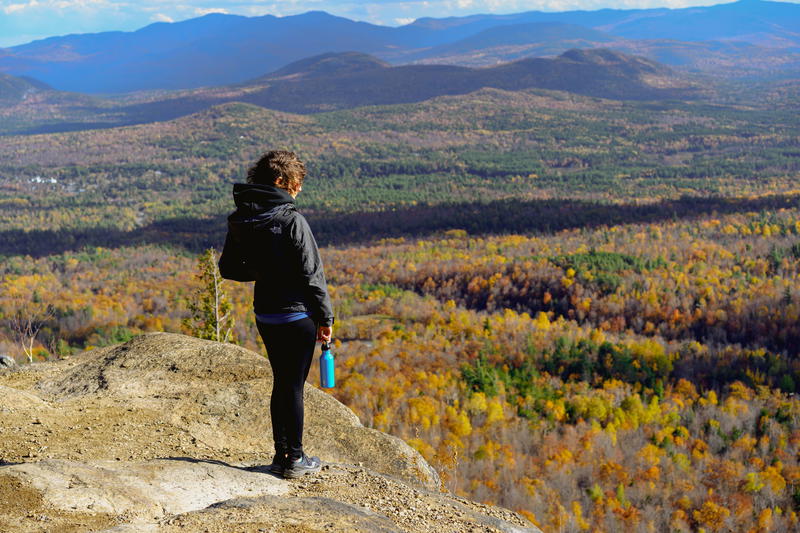
Go on a retreat
Depending on the length of your sabbatical, consider a program like Remote Year . Remote Year is a community-based remote work and travel program. Dan and I have both been on a program, and we’ve learned a lot, met tons of friends and saved time, money and energy by not having to book our own travel accommodations.
In many “work anywhere” programs, participants can go on a 1-week retreat, take a month-long trip or go on a 4 or 12 month journey.
For your sabbatical, use the opportunity to network with others, work on a new skill or learn something new. Remote Year has a super strong community of like-minded people, and it’s the perfect platform to provide you with a seamless experience. And there are others, too, if you’d like to see the best remote work and travel programs for trying the nomad lifestyle.
If you choose to work remotely on something while traveling, check out our remote work travel packing list .
Volunteering is a way to give back to the community without having to work in the traditional sense. You can volunteer as close to home as with neighbors in your community, or with a program that may take you across the world, like volunteering at an orphanage in Southeast Asia, or with animals in South America.
There are heaps of ways to volunteer during a sabbatical or adult gap year, and it depends on your passions. For example, when I lived abroad in China, I found the most joy in volunteering with senior citizens.
Back home in NYC, I have volunteered with the nonprofit Hostelling International as a tour guide for travelers. One time, Dan and I volunteered with a wonderful organization called Repair the World , and stocked food at a local food pantry for undeserved local people.
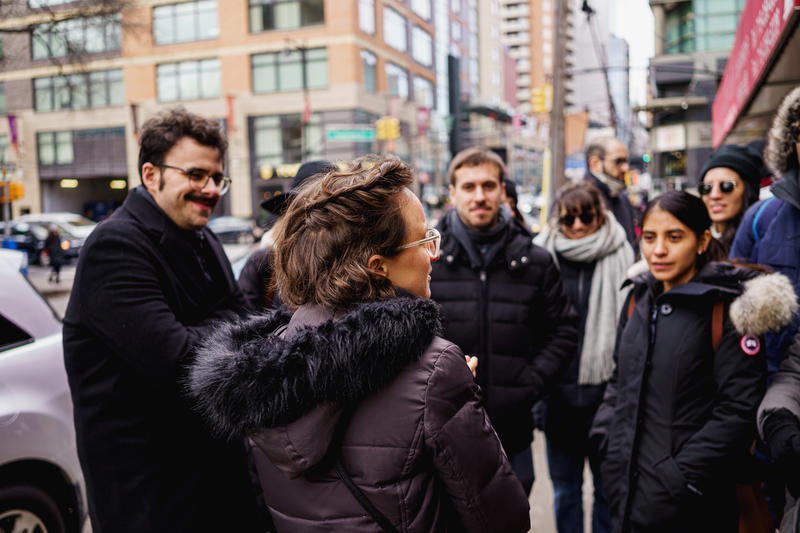
Maybe none of these things interests you at all, and you’d prefer to volunteer on a farm, or with artists, or with an environmental organization. Maybe you’d like to be a volunteer fireman or firewoman. Or, maybe you feel most fulfilled when you’re volunteering for a political cause, or a religious cause.
Whichever way volunteering takes you, start your Google search today for how to volunteer during your adult gap year or sabbatical time. Volunteering as an adult is one of the most fulfilling ways to give back to a community, and to the world, after many years spent working and potentially not having time for much else.
Take on an internship
If you’ve even wanted to try a new profession or change your career, this is your chance.
When you hear the word “intern,” you may think of a college student trying to get a foot in the door with a company, or the part-time younger employee who’s taking coffee orders for the execs. Throw this idea of an intern out the window and think farther.
You could be an intern at a vineyard, if you’ve always dreamed of learning how to make wine. You could intern at a nonprofit organization that needs a low-stress employee to take care of some things in which you have a professional background.
Once you redefine what an intern is, you may realize that you could be doing work in a completely new environment and learn some new tricks of a new trade, without dedicating yourself to a full-time high-stress role with lots of demands.
Finish (or start) a side project
I think this is one of the best cases in point for how to spend a sabbatical year as an adult.
Take me, for example. For years, I dreamed of being a writer and starting a travel website. I just didn’t know where to start. Dan and I started this website a bit before our sabbatical year, but this website was pretty bare bones until we started dedicating time, effort and learnings for how to grow a travel blog.
This website was originally our side project, and it still is! Thanks to some wonderful offers from around the world like our collaboration with the Lisboans and Remote Year , we were given inspiration for how to continue this project as a side hustle and turn it into a growing passion project. You have to start somewhere.
Starting and even finishing a side project, such as art, an Etsy store, writing a book, becoming a baker, or anything else under the sun, can be productive and fulfilling ways to spend a career break.
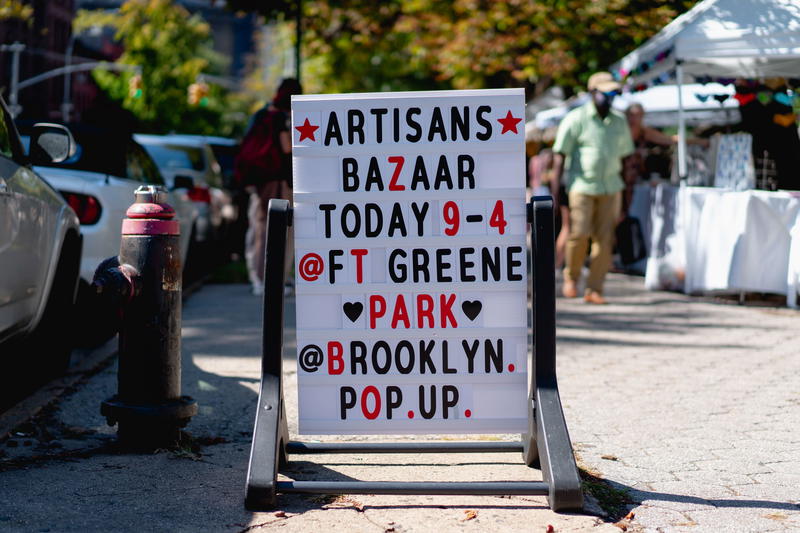
Write a book or start a blog
If you have accumulated a lot of knowledge about a topic, but could never find the time to get it out of your head, well, the time to put all your thoughts into words is during a sabbatical.
A blog is one of the best ways to put together your thoughts in an organized way. We never could’ve dreamed that our blog would grow into the big project you see here, but with dedication, time, research and long nights spent writing, here we are! This was all starting during our gap year.
If you want to think more creatively, a book can be a creative story or go into a lot of detail about a specific topic or accomplishment. We have a friend who recently took time off to write his book and he finished it, publishing it and proceeding to sell it online.
We have other friends who’ve started blogs that blossomed during inspirational gap years, and our best advice is still that today is the best day to start (even if you can pour more time into it while you are on your career break).

Build a physical item
Working with your hands is a great escape if you typically make a living by looking at a screen.
Working in front of a screen for long hours is completely draining, and makes you sedentary.

Consider what you enjoy most about working with your hands. Is it building ceramics, like Emma, who started a pottery brand , or is it taking apart motorcycles and rebuilding them in your garage, like my friend Anthony?
Oh, maybe you like putting computer parts together to build Frankenstein computers, or, are you secretly a painter who needs to be sitting in the park with a set of watercolors?
There are so many ways to work with your hands and start creating, and if you choose to take a gap year, you may just have the proper amount of time.
Spend time with family
One regret people have about their professional lives is that they wish they could spend more time with family.
If you think about how much time we spend working , it’s not only the work. It’s the getting ready for work, the commuting to and from work, the days we try to take off from work and then can’t, and more.
If you take a few months, or even a year, to visit all your family around the country and the world, wouldn’t that be a great way to spend a sabbatical? Imagine feeling so fulfilled that you had the time (life’s richest resource) to visit all your family near and far, leaving no one out. That’s a modern sabbatical idea, for one thing.
Travel the world
We’re biased because this is our favorite option, as two people who met over a love of travel . There is so much culture and knowledge in the world. It’s waiting for you to find it.
Some of the best experiences that we have are from traveling. We’ve both taken travel sabbaticals in our own ways, too. My first gap year (ahem, two years) was teaching abroad in Shanghai, China, where I ended my contract and traveled pretty indefinitely around Asia until I came home for a friend’s wedding in the US that fall.
I didn’t start working full-time again until after New Year’s the following year as I worked on traveling more and executed a job search.

Dan, on the other hand, took a working sabbatical during which he traveled with Remote Year and pivoted from his full-time gig to starting a completely remote freelance business that carried him professionally for the next two to three years. During Remote Year, he traveled to 12 cities around the world, with lots of side trips in between, and had the trip of a lifetime, while also being highly productive!
If you fast-forward, and you can read more about this in our guide to Remote Year , we did Remote Year together, both while freelancing, as part of our 10-month sabbatical away from home.
We continued to travel and freelance and work on our passion projects in East Asia, from Taiwan to Vietnam until we moved back home to Brooklyn the next spring.

The truth about all these sabbaticals is that they involved work (and lots of it), but at the same time, the experiences we created were vastly different from our home lives due to how we shook things up with travel in the mix. We recommend this type of modern sabbatical.

Learn a new language
Dan actually thought of this idea for a sabbatical during which you could study or immerse yourself in a new language as a new life skill to show off. Ironically, I’m the one who loves learning languages and even wrote this guide for how to learn a language for travel .
Learning a language is not easy, nor does it happen automatically or just with practicing on an app every day. You really need to immerse yourself in a culture to fine-tune your fluency, pick up slang, speak with real locals and learn all about a culture.
For this reason, taking a sabbatical for language-learning ambitions could be tons of fun. There are lots of language schools in South and Central America that come highly recommended, from Guatemala to Colombia, and excellent teachers all over the continent if you wish to learn Spanish.
Are you interested in learning Chinese, Arabic, Russian, Japanese, Korean, Thai or Hindi? The first step is to choose the language and then check out the logistics of what it would take to get to a country that would let you take a deep dive in learning such skills. It would be unforgettable as your career break year!
Move to a city or place you’ve always dreamed of
Do you live in the city and ache for the small town life? Or do you live in a tiny village and yearn to walk the streets of a metropolis like NYC ?
A modern sabbatical is the best time to do this type of thing, if you’re ready to jump forward into moving (and if you are, check out our moving tips ), starting a new (perhaps temporary) life, and not let life pass you by just dreaming.
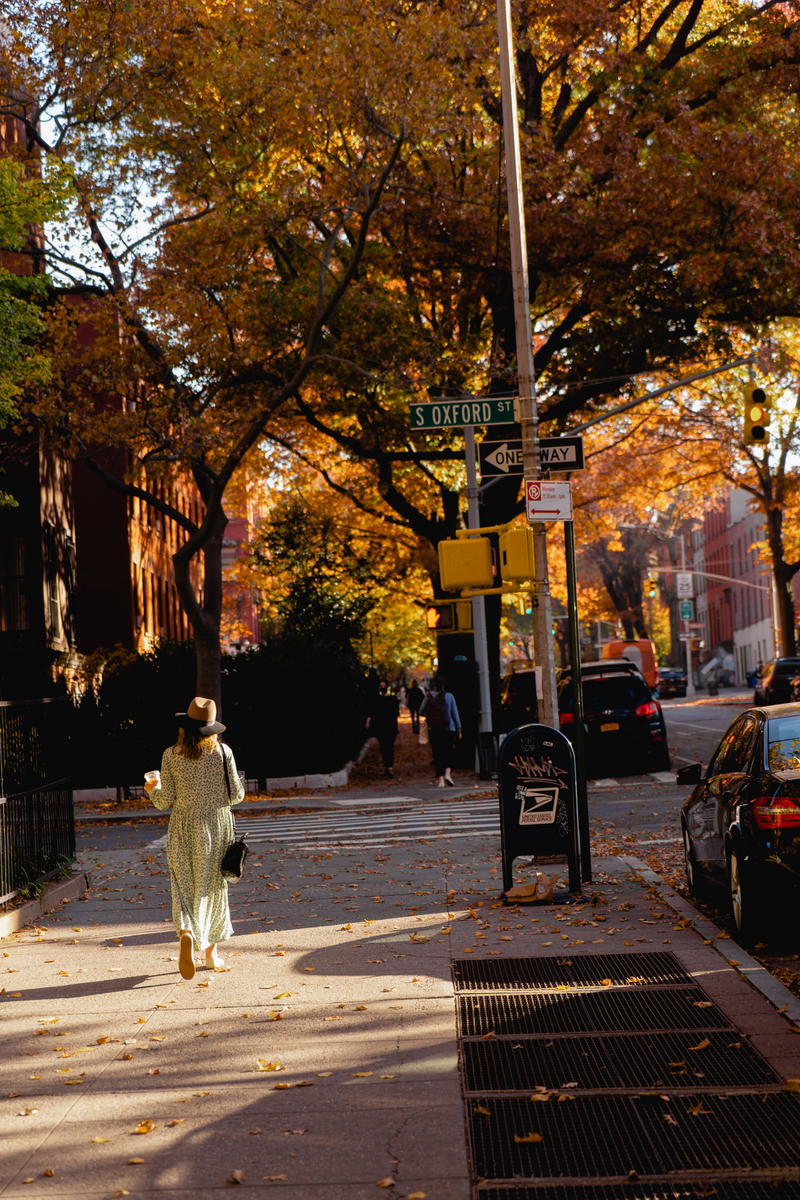
Moving to a new place is something that many professionals on a career break consider if their job is tied to a particular metro area or city. If you’ve got time away from the office or from your place of work, why not rent a cabin in that ski town you loved as a kid? Or hop around beach towns in Southeast Asia if you’re into surfing?
You could also stay close to home and choose to reside in an outpost near your favorite hikes, where you can spend time in nature every day. Dare we say the sky’s the limit.
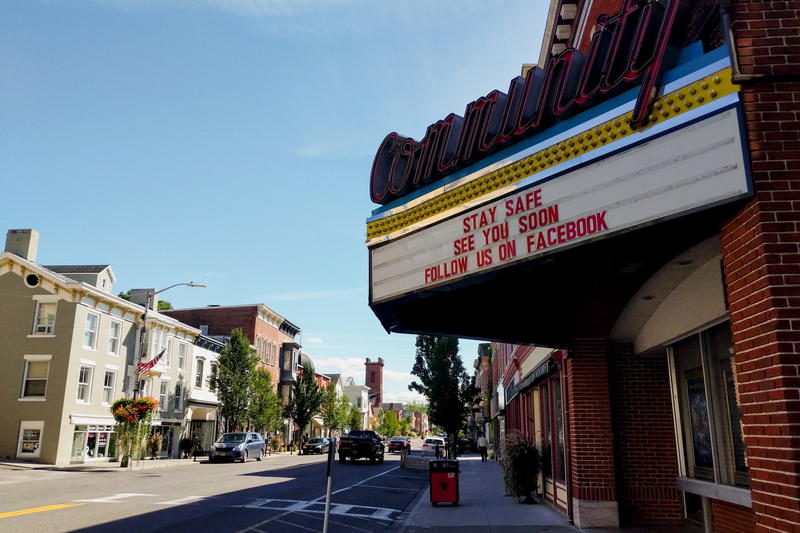
Build a business and freelance
Part of building a business is learning how everything works together. One thing leads to another and when you work full-time, it can be hard to find the time to learn everything.
When you take a sabbatical, you can spend the time to try and experiment with different ways to create and scale a business.
Learn a new skill or pursue education
If professionally, you are being held back by not knowing a certain program or methodology of doing something, a sabbatical can help you find the time to learn it.
Tangentially, in our guide to what to do in between freelance projects , the same can be said for what to do during a sabbatical.
You can take classes on Skillshare , learn about Pinterest marketing on a platform like Tailwind , or try your hand at learning night photography .
In terms of pursuing education, you could apply to do a post-bachelor degree, or a master’s degree. There are also lots of certifications out there that have your name on them. Some certifications, if done at a leisurely pace, may not even feel like “work,” like the Morning Brew Business Essentials Accelerator . While I took this eight-week course as a way to up my skills and hopefully advance my career, it could easily be done during a sabbatical.
Getting a certificate in project management, or Excel, could be a great step in your career for when you come back to it.
Start a podcast
I happen to really like podcasts , and my Spotify told me that I listened to something crazy like 39,000 minutes of podcasts this year. Statistics about my podcast addiction aside, starting a podcast is something that takes a bit of research and prep, and then can really pay off or be fun!
Are you interested in starting a podcast during your gap year? Check out this guide to how to create a website for your podcast before you do anything further, because this is a step people often miss.
If you start a podcast during your sabbatical, please let us know, and we’ll give it a listen!

Read a book
I don’t remember the last book I fully read for leisure, and that’s really bad. I also just saw on Instagram that my cousin has read almost 100 books this year, and I’m feeling pretty down on myself. If I had all the time in the world, like on a sabbatical, I’d probably dig into a lo-o-o-o-ong list of books.
Are you a bookworm, or do you want to become a better reader? Setting a goal of finishing a list of books during a gap year can be a cool place to start. If you need a recommendation, check out our friend who is a reader and writer, Rebecca Fishbein .
Teach or become a mentor
It can be very rewarding to take the time and pass on your skills onto someone early on in their career.
In fact, LinkedIn has a way to mark yourself available as a mentor for others, and I opted into this about a year ago. I immediately started getting a few messages from recent college grads who wanted to know about marketing, communications and all my other skill sets mentioned on LinkedIn. This is the simplest way to start sharing your skills with younger professionals.
Or, there are formal organizations, based on your profession or line of work, to which you could apply to become a professional mentor in a specialized field. This could be more toward a part-time or contract role, especially if paid. It will vary by field. Many people enjoy giving mentorship, especially if they had spectacular mentors early on in their careers.
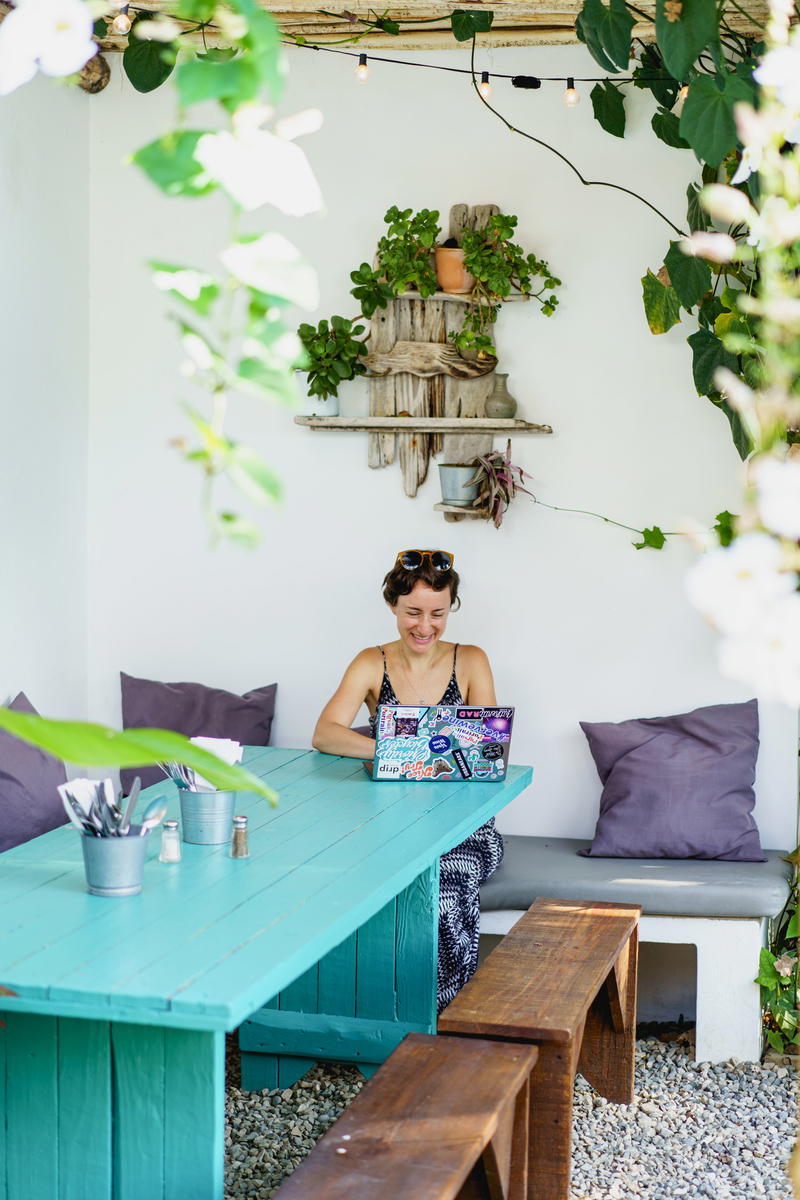
Spend time on yourself
Our thinking is often controlled by work-related thoughts and actions, which can lead to burnout if we don’t take time for other activities. Engaging in fulfilling activities can help refresh our minds and even improve our professional spark!
However, sometimes you need time for yourself to help you out in your personal life. Even four to six weeks is enough time to make a change and help create new and strong habits.
If you are trying to lose weight or improve your diet, you can spend your sabbatical learning how to cook new recipes and learn how to make healthier choices.
If you are trying to quit bad habits, you can take the time to do something about it to make sure you come out on the other end as a better person.
Of course, we’ll recommend travel as a true way to spend time on yourself and with yourself, especially if you choose to travel solo somewhere . If you’ve never traveled alone before, a sabbatical or gap year can be an excellent time to try out this experience that we feel everyone should have at least once in their lives.
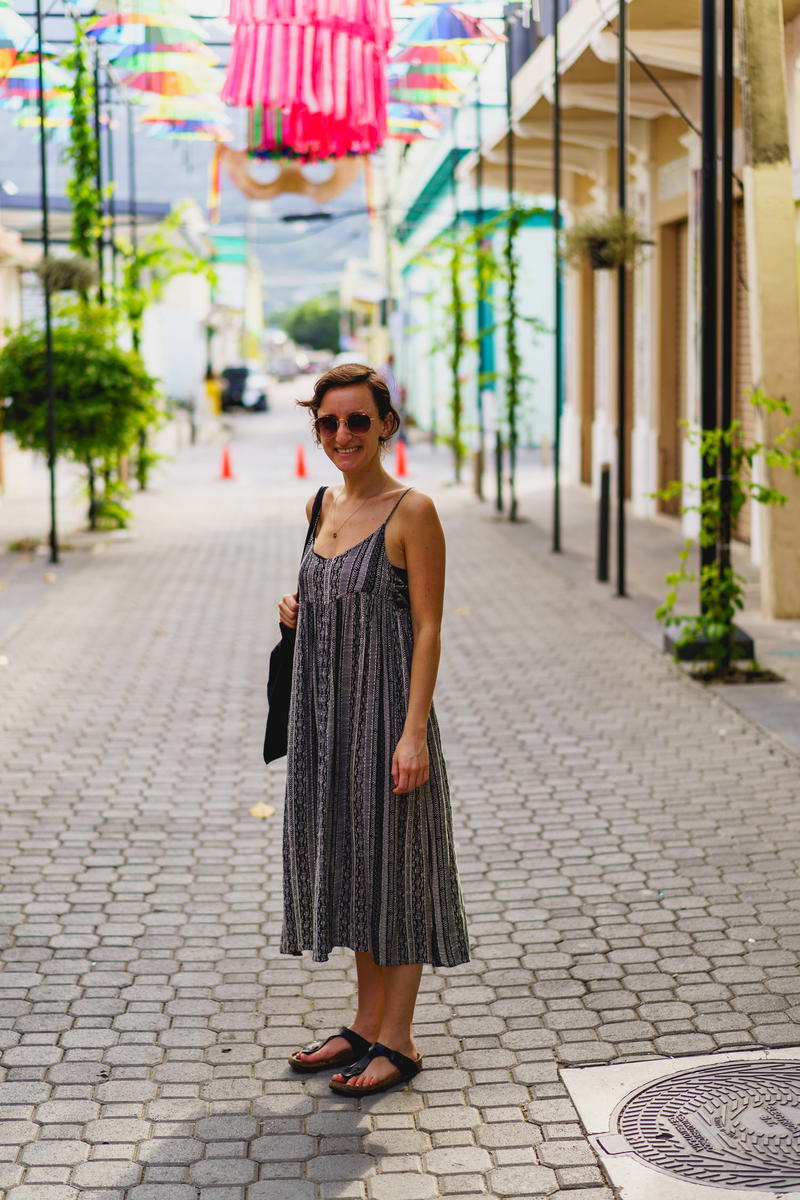
Everything else!
How to take a year off work.
A sabbatical is the best way to take a year off of work! Though, a sabbatical is more of a concept and is easier said than done.
Many people have the fear that it will be hard to get a job after taking time off from work, or that they may a bit behind the times professionally. However, using a sabbatical for any of the productive ways above can make you come out of a sabbatical as an even better professional, and a more confident human being.
If there’s one last thought to leave you with, it’s how to explain gaps on your resume after taking time off from work. Check this one out and let us know how it works for you. Enjoy your sabbatical!
What should I do to plan for my sabbatical?
I won’t go into too much detail, however I wanted to put a few quick things on your radar before planning how to be creative with your sabbatical.
- Watch your finances. Have some money saved up to cover any loss in salary if you take a pay cut or aren’t getting paid at all.
- Create milestones, if that’s what you’re after. This time is valuable, and you should use it to feel productive and not procrastinate.
- Find a community. Whether you are traveling or staying local, find a community to help support yourself professionally.
- Take notes and try and learn. A sabbatical is usually a time to be reflective. Use the time wisely, so you can look back and understand your journey through your unique time away from work.
- Pick a duration. A sabbatical can be any length of time. Dan’s old company gave a 6-week sabbatical for every 5 years at the company. Other companies may offer a 6-month sabbatical. The time you take will determine what you can achieve.
Pin Your Favorites on Pinterest!

You may also like

Why You Need a VPN for Travel in 2024
Do you need a VPN for traveling? How can a VPN benefit you for working remotely and traveling internationally? Here’s how to determine if you need a VPN for your next trip abroad.

What to Expect as a Digital Nomad in Lima
What can you expect by going on Remote Year and living in Lima? Is Remote Year worth it? Is Remote Year safe? Here's what the Remote Year program is like.

15 Best Remote Work and Travel Programs (And Highlights of Each)
How do you choose the best work and travel program for your preferences and job? In this guide, I compare the top retreats and experiences to help find the right one.

What Is a Coworking Space?
Here we discuss how to explain coworking, including a simple coworking definition and coworking space introduction. Ready to learn about the benefits of coworking?

Digital Nomad Life: How to Make Friends and Stay Social (12 Ways)
Making friends and having a social life as a digital nomad doesn’t have to be hard! Here are a few cool ways I met new people when I lived abroad.

How I Convinced My Employer to Let Me Work Remote and Travel (My Tips)
I convinced my boss to let me work remotely and travel the world, and I didn’t even prepare much of a plan! II’ll share my tips on how to work with your boss on this negotiation.

Bonjour ! We’re Becca & Dan.
We created this blog to share some of the knowledge and experience that we have around travel , remote work , photography and beyond!
We're currently planning our next adventure.
Join the club
You’ll get emails with our latest articles, tips, advice and so much more! You won't find this content anywhere else!
This website may contain affiliate links. We earn a small commissions when you purchase via those links — and it's free for you. It's only us (Becca & Dan) working on this website, so we value your support! Read our privacy policy and learn more about us .
Among other programs, Half Half Travel is a participant in the Amazon Services LLC Associates Program, an affiliate advertising program designed to provide a means for us to earn fees by linking to Amazon.com and affiliated sites.

How to Represent Travel on Your Résumé
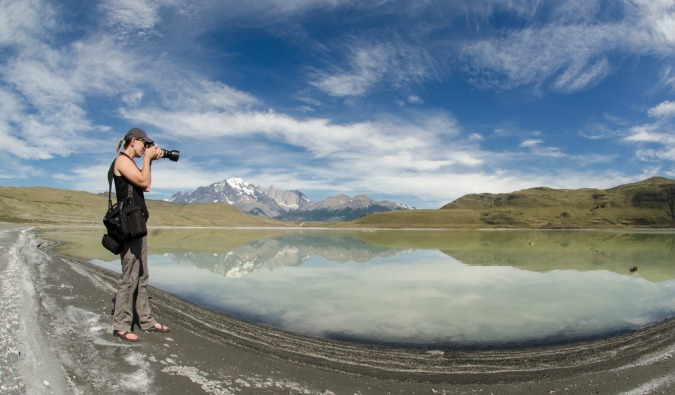
What do you do when you come back home? How do you explain the gap in your employment to the hiring person in front of you? How do you make travel seem like a win? Those are all valid questions people who take a career break have so I invited career break expert Sherry Ott to tell us when (and when not) to use travel to boost our resume.
You’ve just finished your life-changing travels and now you’re back home and considering how you are going to find work again. Whether you’re travels were a career break, gap year , or sabbatical, you will need to figure out how you account for the time and experiences on your résumé.
Normally you need to account in some way for the time spent away from work. If employers see a gap in your resume that isn’t explained, you may not make it through the first cut of résumés.
I often work with travelers who are re-entering the workforce and are faced with the following questions when trying to update their résumé.
Travel: Where should it go on my résumé?
It depends. Do you think the experiences you had traveling apply to you finding a new job in your field? If so, then place it in the main part of your résumé. If you don’t feel like it applies, then it probably belongs in a section reserved for “Additional Information” or “Hobbies.”
Kristin Zibell of Take Your Big Trip is a frequent career breaker and she keeps her résumé flexible, saying, “I found the recruiters and hiring managers were looking for the professional story in my résumé. Every statement on my résumé needed to support this story and show the situation, action, and results. If my travels and experiences had a direct relationship to the position, like my blogging or volunteering abroad, then I listed it like a position: ‘ Travel Blogger’ or ‘English Teacher.’ Most of the time, I found that travel was an interesting fact about me and explained the time gaps, but not directly related to the positions. In this case, I placed my travel experiences at the bottom in an ‘Additional Activities’ section that colored who I was and what I had done.”
Kristin’s résumé highlights her travels as international experience:
- Ten months of travel to India, Nepal, Southeast Asia , the Middle East, and Europe , from October 2008 to May 2010.
- Activities included volunteer work at Mother Teresa Mission Charities in Kolkata with disabled women and teaching English to street children in Jaipur.
- Designed and authored three travel blogs during these multi-month solo trips. Currently editor of Takeyourbigtrip.com.
What type of information should I share?
It’s probably not a good idea to put that you were a beach bum for 12 months, or that you traveled the Full Moon Party circuit. Instead, think about what you did on your travels that had to do with education, skill building, volunteering, and business, and highlight them in a professional manner. But there are some other skills you might want to consider:
1. Volunteering One should always represent any volunteering done while traveling on a résumé. For me it demonstrated my commitment to education, giving back to other cultures, and global experience. You should always include where your volunteering took place, what your responsibilities were, and if there was any end result. The end results could be tangible things such as building a house, cleaning up after a natural disaster, or restoring wetlands. Example:
- Extensive international travel background, comfortable working with and in different cultures.
- Volunteered with Cross-Cultural Solutions in New Delhi, India, teaching computers, conversational English, and interview skills in order to assist young adults entering the workforce.
If not covered somewhere else in your résumé, also consider including any résumé-building, intangible results, such as improved leadership skills, proven ability to take initiative, and listening and communication skills. Finally, if your volunteering was for an extended period of time, such as six months to a year, then consider putting this experience in your work or education history.

I highlighted my various work experiences as international work experience:
ESL Instructor: ILA Vietnam, Ho Chi Minh City
- Teaching adults English as a Second Language (ESL)
Consultant: CAMENAE, Singapore
- Delivered a usability analysis of the e-commerce site and led subsequent redesign
- Conducted tests and created a regression test plan
- Consulted with owners on their business vision and ensured that it can be supported on the site. Offered guidance on short- and long-term business plans and their technical implementation.
3. Blogging Did you blog , write for publications , or do photography ? All of these things illustrate that you took your travels seriously. Think about the new skills you learned when maintaining your blog. Did you increase your knowledge about search engine optimization, marketing or sales of affiliate programs, coding, or social media tools?
Laura Keller did a career break with her husband Ryan and blogged about it at Round We Go . She represented her blogging in the following way:
Digital Entrepreneur, Travel Blogger & World Explorer
- Expanded economic and cultural views while exploring 20 countries in 14 months of extensive travel across six continents
- Created, launched, and hosted the travel website RoundWedGo.com, attracting 10,000 unique monthly visitors
- Governed online traffic, social media, and SEO to create advertising and sponsorship revenue for RoundWeGo.com
- Contributed travel articles to leading lifestyle and travel websites and blogs
Be sure to talk about the soft skills
Even if all you did was lounge around a beach all day and drink beer, you picked up some business skills while traveling around the world. It’s hard to think about mundane day-to-day experiences as skill building, but they are. There are a lot of business skills you can learn without actually having gone to business school. In fact, these “business skills” are simply important life skills that can give you an edge:
Negotiation skills – All that time spent in markets haggling over the cost of a magnet was beneficial. You were exposed to and employed various negotiation tactics that can be highlighted. Businesses want people who are sharp negotiators and can make deals, not people who are pushovers.
Budgeting and planning – You most likely had to plan and save for your career break. In addition, you continued to monitor your budget and assessed any financial risks.
Adaptability – When you travel, things go wrong, plans change, there are mudslides that you can’t predict. As a traveler, you are forced to change plans constantly. You handle the issues that hurdle your way quickly after a few months on the road. In the ever-changing world of business, the ability to adapt is important.
Communication skills – When trying to converse in foreign cultures, verbal and nonverbal communication is necessary to overcome language and cultural barriers. This skill is helps you deal with people, which is an important aspect of any job. Workers with good communication skills are the ones who rise fast.
All of these new skills belong on your résumé. And when you are asked about them in an interview, you’ll be able to share an amazing story about “that time in Vietnam …” when a skill came in handy and how it can help you in your job. As Kristin Zibell says, “In an interview, I used travel stories to illustrate soft skills, like dealing with adversity or ambiguity. I shared my travel experience as a part of my professional story. This technique made me a more memorable and interesting candidate.”
Use your travel to make you stand out. Keep in mind that many of these experiences, if described in a professional manner, will make you stand out from other candidates.
Don’t hide your travel when searching for a job — embrace it!
Sherry Ott is a long term traveler, blogger, and photographer at Ottsworld . She’s also a co-founder of Meet, Plan, Go!, a website and national travel event teaching you how you can take your very own traveling career break or sabbatical.
Book Your Trip: Logistical Tips and Tricks
Book Your Flight Find a cheap flight by using Skyscanner . It’s my favorite search engine because it searches websites and airlines around the globe so you always know no stone is being left unturned.
Book Your Accommodation You can book your hostel with Hostelworld . If you want to stay somewhere other than a hostel, use Booking.com as it consistently returns the cheapest rates for guesthouses and hotels.
Don’t Forget Travel Insurance Travel insurance will protect you against illness, injury, theft, and cancellations. It’s comprehensive protection in case anything goes wrong. I never go on a trip without it as I’ve had to use it many times in the past. My favorite companies that offer the best service and value are:
- SafetyWing (best for everyone)
- InsureMyTrip (for those 70 and over)
- Medjet (for additional evacuation coverage)
Want to Travel for Free? Travel credit cards allow you to earn points that can be redeemed for free flights and accommodation — all without any extra spending. Check out my guide to picking the right card and my current favorites to get started and see the latest best deals.
Need Help Finding Activities for Your Trip? Get Your Guide is a huge online marketplace where you can find cool walking tours, fun excursions, skip-the-line tickets, private guides, and more.
Got a comment on this article? Join the conversation on Facebook , Instagram , or Twitter and share your thoughts!
Disclosure: Please note that some of the links above may be affiliate links, and at no additional cost to you, I earn a commission if you make a purchase. I recommend only products and companies I use and the income goes to keeping the site community supported and ad free.
Related Posts

GET YOUR FREE TRAVEL STARTER KIT
Enter your email and get planning cheatsheets including a step by step checklist, packing list, tips cheat sheet, and more so you can plan like a pro!

- About Career Gappers
- Our blogging journey
- Write for us
- Work with us

- Travel career break guide
- The decision stage
- The planning stage
- The preparation stage
- Career break travel tips
- Returning home: what next?
- Career break travel insurance
- Inspirational stories
- Career skills from travel
- Career gaps on your resume
- How to take a workation: complete guide
- What is remote working?
- Work trip packing list
- Workation wellbeing benefits
- Remote work productivity tips
- Remote work insurance
- Remote work quotes
- Barcelona workation guide
- Cornwall workation guide
- Hamburg workation guide
- Lisbon workation guide
- Mallorca workation guide
- Georgia workation guide
- New Zealand
- Career Gappers Facebook Community
- Interviews with career gappers
- Workations Facebook Community
Travel career break resources
12 career break ideas | inspiration for your travel sabbatical.
Picture this: you have the opportunity to take six months off work, and you can do whatever you like with the time. Sounds amazing, right? It might not be as far-fetched as you think. The idea of taking a travel sabbatical is becoming a reality for a growing number of people, and with a good plan there’s no reason you can’t do it too. But how would you use the time? We’ve compiled some of our favourite career break ideas to help you get started.
This article contains links to products and services we love, from which we may make commission at no extra cost to you.
In this article:
Career break ideas: making dreams happen
Before we get stuck into our travel ideas for your career break (scroll below if you want to get straight to them) – you may be wondering how any of this could be possible. Surely taking a long break from work to travel is a dream that only a lucky few people can achieve?
The truth is that travel career breaks are becoming more common , and with the right approach, anybody can do it. There will be sacrifices along the way, and there will always be risks involved – but these are far outweighed by the long-term benefits to your health, happiness and career.
Lisa and I saved for nearly five years for our first travel career break, because we wanted to have enough funds to do everything on our bucket list – but it doesn’t need to take that long.
Whether it’s house-sitting , Couchsurfing , remote working or volunteering, there are countless options for travelling on a small budget. And in our ever-connected world, travel is getting easier and cheaper all the time.
Our ultimate guide to taking a travel career break explains everything you need to know from start to finish. It will answer all of your concerns, and walk through every step of the process. That’s everything from making the initial decision, right through to returning home and getting ready for life’s next big adventure.
So, without further ado, here are our top recommended travel experiences to try on your career break…
1. Hike the Inca Trail to Machu Picchu
One of the new seven wonders of the world , and a slice of history among incredible nature – it’s easy to see why Peru’s Inca Trail to Machu Picchu tops many people’s South America bucket list . Lisa and I built our career break itinerary around the Inca Trail.
Now, looking back, we fondly remember it among the greatest experiences we’ve ever had. Although it’s a fairly challenging hike, with some basic training it’s one that can be done with little trekking experience. We did it in a group with people of varying ages and abilities, and everyone supported each other through it – that’s what’s so great about small group adventures!
We did the Inca Trail with G Adventures , and we highly recommend them to anyone considering it. Although they’re not the cheapest option, they have a great record of ethical treatment of local staff, and provide an unforgettable experience – we felt looked after every step of the way.
Peru is a captivating place to travel more widely, with a diverse geography encompassing Amazon jungle, Andes mountains and sweeping deserts. Check out our recommended Peru itineraries for more ideas on what to do during your visit.
2. Go trekking in Patagonia
The most common question I am asked about travel is, “what is your favourite place you’ve ever been”? Despite having visited many different parts of the world, it’s always an easy one for me to answer: Patagonia.
This huge region straddles Chile and Argentina across the Southernmost tip of South America. It is the setting for some of the world’s most extreme and magnificent natural landscapes, featuring giant glaciers, pristine lakes, orange-tinted granite towers and snow-doused mountains. You will also find an abundant diversity of wildlife, such as pumas, guanacos and giant Magellanic woodpeckers.
Patagonia is home to many of the world’s greatest hiking trails , most notably the W Trek in Chile’s stunning Torres Del Paine National Park. Our Patagonia itinerary and travel guide details different options for exploring the region’s highlights.
For a truly once-in-a-lifetime adventure, you could combine a Patagonia trip with a cruise beyond the end of the world to Antarctica. Ships set sail from Ushuaia, the world’s southernmost city, in Argentina – take a look at G Adventures’ Antarctica cruise packages .
3. Road-trip the USA West Coast in a van
Since Lisa and I from our travel career break, we have spent a lot of time dreaming up ideas for what our next big adventure might be. Right at the top of our list is one of the world’s ultimate road trips: Canada to Mexico along the US West Coast.
Van travel has surged in popularity in recent years as people continue to seek out new and adventurous ways to travel. What could be more liberating than converting an old van and then living in it while you explore the world?
A road trip from Vancouver to La Paz (on the Mexican Baja California peninsula) could trace the Pacific coast and incorporate highlights along the legendary Highway 1. A typical itinerary includes stops at Seattle, Napa Valley, the Sierra Nevada, Los Angeles, Tijuana and Guerrero Negro.
If you’re up for the challenge and think you have what it takes to maintain a vehicle over long-term travel, it’s easier now than it has ever been. As the trend grows, so does the availability of resources to support you in such a journey.
Try starting with the #vanlife hashtag on Instagram for a treasure trove of insights and inspiration. Alternatively, simply do the road trip in a car – see Rentalcars.com to find the best prices.
4. Learn to scuba dive in Southeast Asia
Under the water, a whole new world is waiting to be discovered. Scuba diving is a brilliant way to challenge yourself, learn something new and witness some mind-blowing aspects of nature while on a travel career break.
If you’re a complete beginner (we were), you can try a ‘Discover Scuba Diving’ session to get a taster for it. These are available in most diving hotspots around the world. We did ours in Cairns at the Great Barrier Reef, which inspired us to take diving more seriously.
We then took our Open Water qualifications in Bali , dived some more in the Philippines, and finally completed our advanced qualifications in Thailand. These are some of the most affordable places in the world to learn scuba diving, and are rife with incredible marine life. You can swim with turtles, whale sharks, manta rays, banded sea snakes and so much more!
After learning to scuba dive in Southeast Asia, Lisa and I have brought home a new passion that will be with us for the rest of our lives. Learning to scuba dive while travelling could be the beginning of a lifelong passion hobby. It could even lead to a new career path; many of the people we have met working at dive centres around the world began their journey while on travel sabbaticals.
5. Try a Liveaboard diving experience
If you want to try a completely immersive diving experience on your travel career break, you could opt for a Liveaboard . This involves living on board a purpose-built diving boat for a week or longer. It’s possible for people of all abilities from beginner to expert, and you can even take qualifications while on board.
Liveaboards are often the only way to reach the world’s most remote and beautiful diving spots. Scuba day trips have limited reach, but on a Liveaboard trip you can access some of the most impressive and untouched sea life locations possible.
Liveaboard packages come in many variations, and are available in far-flung corners of the world including the Galapagos Islands, Antarctica, Fiji, Alaska, and everywhere in between.
6. Explore the cities, cultures and cuisines of Europe
My love for travel began with a backpacking trip across Europe when I was 18. My home continent is packed with so many vibrant cities, each with something different and compelling to offer. I’ve continued to explore it over the years and my heart has been captured by Krakow, Tallinn, Barcelona, Venice, Prague, Berlin, and many more wonderful places.
Europe remains an incredibly popular region for backpacking, and makes a great option for a travel career break. You could easily spend a year travelling from country to country and city to city, finding something new to experience every day.
The food of Europe is a joy to discover. From the heartwarming, wholesome staples of Central and Eastern Europe to the Mediterranean delights of Spain and Italy, there is a culinary adventure every way you turn.
Even though Europe has dozens of countries packed into a relatively small area, each place has its own traditions. For example, we found the cuisine of Slovakia to be very different to the neighbouring Czech Republic, and Lithuanian food a world apart from the other Baltic nations.
7. Wander the wilderness in New Zealand
New Zealand has only been inhabited by humans for a few centuries. The country is today one of the world’s least-populated. Its stunning islands are still dominated by nature, scattered with volcanoes, geysers, lakes, glaciers and dark sky sanctuaries.
It’s long been a sought-after destination for adventurous travellers, but has exploded in popularity in recent times after lending its scenery to the set of Lord of the Rings .
Despite its remarkable wilderness, New Zealand’s two main islands are pretty well connected by road. It’s the perfect place for a long and slow scenic road trip, interspersed with outdoor adventures.
The North Island has quirks such as the Tongariro Crossing, Rotorua thermal springs, and the beaches and forests of Coromandel. On the South Island – our favourite – you can cruise Milford Sound, step on Franz Josef Glacier and hike great trails like the Routeburn Track.
We took a two-week road trip on the South Island , which wasn’t nearly enough time! I’ve met people who have spent an entire year-long travel sabbatical exploring New Zealand, and not regretted a moment. It makes a strong candidate for anybody’s travel career break shortlist. You can view and book G Adventures New Zealand tour packages here .
8. Travel overland across the Pan-African Highway
One night at an Ethiopian jazz bar in Addis Ababa, I met a woman who was part-way through an extraordinary solo trip. She had set off from Cape Town a few months earlier, and was on her way overland to Cairo.
The route is known as the Pan-African Highway, and it struck me as one of the world’s ultimate travel adventures.
Relatively few people choose Africa as a career break option, but the continent has so much to offer. The most amazing wildlife, a great diversity of cultures, mighty rivers and waterfalls, and unrivalled vistas.
The route from Cape Town to Cairo encapsulates all of this on a journey of over 10,000 kilometres. Check out the onestep4ward blog about Johnny’s journey from Cape Town to Cairo for inspiration. He took seven months to complete the journey, passing through 19 countries on the way.
During the adventure he cage-dived with great white sharks, climbed Mount Kilimanjaro, bungee-jumped at Victoria Falls, trekked with mountain gorillas, went on safari on the Serengeti, saw Egypt’s pyramids, and much, much more. The trip cost $10,000 and involved only one flight.
9. Get off the beaten path in rural Laos and Vietnam
Southeast Asia is a highly popular region for backpacking, with Thailand in particular drawing millions of tourists every year. It has obvious appeal as a career break destination: tropical islands, frenetic cities, authentic street food, extensive cultural and religious heritage – and very affordable prices.
Stepping off the ‘Banana Pancake Trail’ (as the typical backpacker route is known), there is also an abundance of untouched beauty to be discovered in the lesser-trodden regions of northern Laos and Vietnam.
Pivoting from the cities of Luang Prabang and Hanoi, you are within reach of a different world altogether. To the north you will find jungle-strewn mountains, caves, huge sleepy rivers, lush green plains, rural villages and endless agricultural terraces.
One of the last things we did on our travel career break was a trekking journey in Sapa, Vietnam. We were guided by a local villager through the fields and terraces, stopping overnight in homestays with local families. It’s one of the few times I’ve ever felt completely removed from the world I know, unconnected and free of stress. A liberating and eye-opening experience.
10. Have a wildlife and jungle experience in Borneo
If you’re seeking a challenge on your career break and to push the limits of your comfort zone, the jungles of Borneo make for an enticing option.
The world’s third’ largest island is home to one of the world’s oldest rainforests, and the towering 4,095-meter peak of Mount Kinabalu. It also hosts a vast diversity of species, and protected wildlife such as orang-utans, sun bears and turtles.
G Adventures offers a Best of Borneo adventure package that combines the highlights of the Malaysian states of Sarawak and Sabah. This includes scaling Mount Kinabalu, visiting national parks and conservation centres, and a river cruise to discover pygmy elephants.
This tour provides a physical challenge and will put you into unfamiliar environments. But at the same time, it includes tourist-class accommodation so you will be able to rest and recover in comfort.
11. Visit China’s natural landmarks and historic cities
Before Lisa and I went on our travel career break, I was lucky enough to spend time travelling in China while on a business trip.
I witnessed the stark contrasts of historic Beijing and modern, bustling Shanghai. I met Pandas at the Chengdu breeding centre and took in the scenery of the colossal Jinsha River.
China is a vast land that has a greater diversity of cultures and languages than all of Europe combined within its territory. And although travel in China hasn’t always been easy, the country is increasingly opening up to foreign visitors. This makes it a compelling option for a travel career break.
Many people choose to take a teaching placement in China. The average monthly teacher’s salary in China is around $2,500–$3,400 , which goes a long way in terms of living expenses. To do this you will generally need a TEFL qualification and at least a couple of years’ teaching experience.
If you want a shorter trip to incorporate into your career break itinerary, G Adventures offers a three-week Highlights of China package, This features the Great Wall, Terracotta Warriors and Emei Shan monasteries, among other highlights.
12. Go on a world wine voyage
Travel career breaks can lead to new hobbies and passions that you might not expect. Could you see yourself as a wine enthusiast? Or, at the very least… would you enjoy drinking lots of it and exploring beautiful vineyards all over the world?
A friend of ours who took a travel career break ended up working in a winery, and then taking a series of sommelier courses. She is now well on her way to a lifelong career in the wine industry.
You never know where the journey will take you. It might be no more than a series of wine vacations before returning home refreshed, recharged and with a new love for the red stuff. But that’s great too.
Lisa and I first visited a winery together in Cafayate, Argentina, and then again a few weeks later in Mendoza. We enjoyed it so much that we went vineyard-hopping again in New Zealand. Then, after returning home, we took a week-long trip to discover Italian wine in Umbria .
You could build a career break travel itinerary entirely around wine destinations, and in doing so see some of the most beautiful parts of the world. The Andean trails of Chile and Argentina, the valleys and foothills of California, the coastal waterways of Marlborough in New Zealand. Australia’s Yarra Valley, the rolling hills of central Italy, the Rioja Alavesa route in Spain.. the list goes on.
What will you do on your travel career break? Let us know your ideas in the comments below.
More career break ideas
You can find more career break ideas in our series of interviews with inspiring people who have taken travel sabbaticals. Wondering how you’ll be able to raise the funds? See our essential guide to saving money for a travel career break .
Love it? Pin it!
Alex trembath.
Alex is the co-founder and lead content creator at Career Gappers. He is an award-winning communications leader with 20 years of leadership experience, a career that has taken him across the world working with international organisations. Alex has travelled to over 50 countries and is a passionate advocate for blending work and travel by taking career breaks, sabbaticals, workations and business trips.
2 thoughts on “ 12 career break ideas | inspiration for your travel sabbatical ”
What’s more Tessa says the breaker movement is on the up in middle aged workers: “I am starting to see a rise in the number of people taking a career break later on in their career. You have strengths and experiences to offer. With the right attitude, does age really matter?”
The term gap year tends to make you think of high school grads running from responsibilities and partying their way across distant lands. But what if, instead of backpacks and bar crawls, you took time out mid-career?
Leave a Reply Cancel reply
Your email address will not be published. Required fields are marked *
This site uses Akismet to reduce spam. Learn how your comment data is processed .
- Bucket-List
- For First-Timers
- Off the Beaten Path
- Short Stays
- Safari Adventures
- Ambassador Adventures
Trip Styles
- Bucket List
Trip duration

Collections
- For First Timers
- Active Adventures
- Beach Escapes
- Winter Getaways
- Wildlife Trips
- Group Bookings
New and trending
- Flash Pack Alcohol-Free Adventures
- Our Newest Adventures
- Adventures Coming Soon
- Bestselling Adventures
- Iconic Flash Pack Experiences
- Meet Your Travel Experts
- Meet your Pack Leaders
- The Flash Pack Foundation
How it works
- How it Works
- Payments, deposits & instalments
- Travel Extras
- About solo travel
- Careers at Flash Pack
- Partner as a Travel Agent
- Trip terms and conditions
- Safety with Flash Pack
- Flash Pack's privacy policy
Latest deals
- Our September Offer
- Your latest travel offers
- Your last chance to book
Insider trips
Sorry no insider trips are available right now, check back soon.
- Feed your inspiration with all the latest stories from our content hub.
- Relationships
- Career Tips
Top stories

Friendship Tips

Travel Tips

- See all articles
Destinations
- Work-Life Balance Tips
- How to take a career break without quitting your job
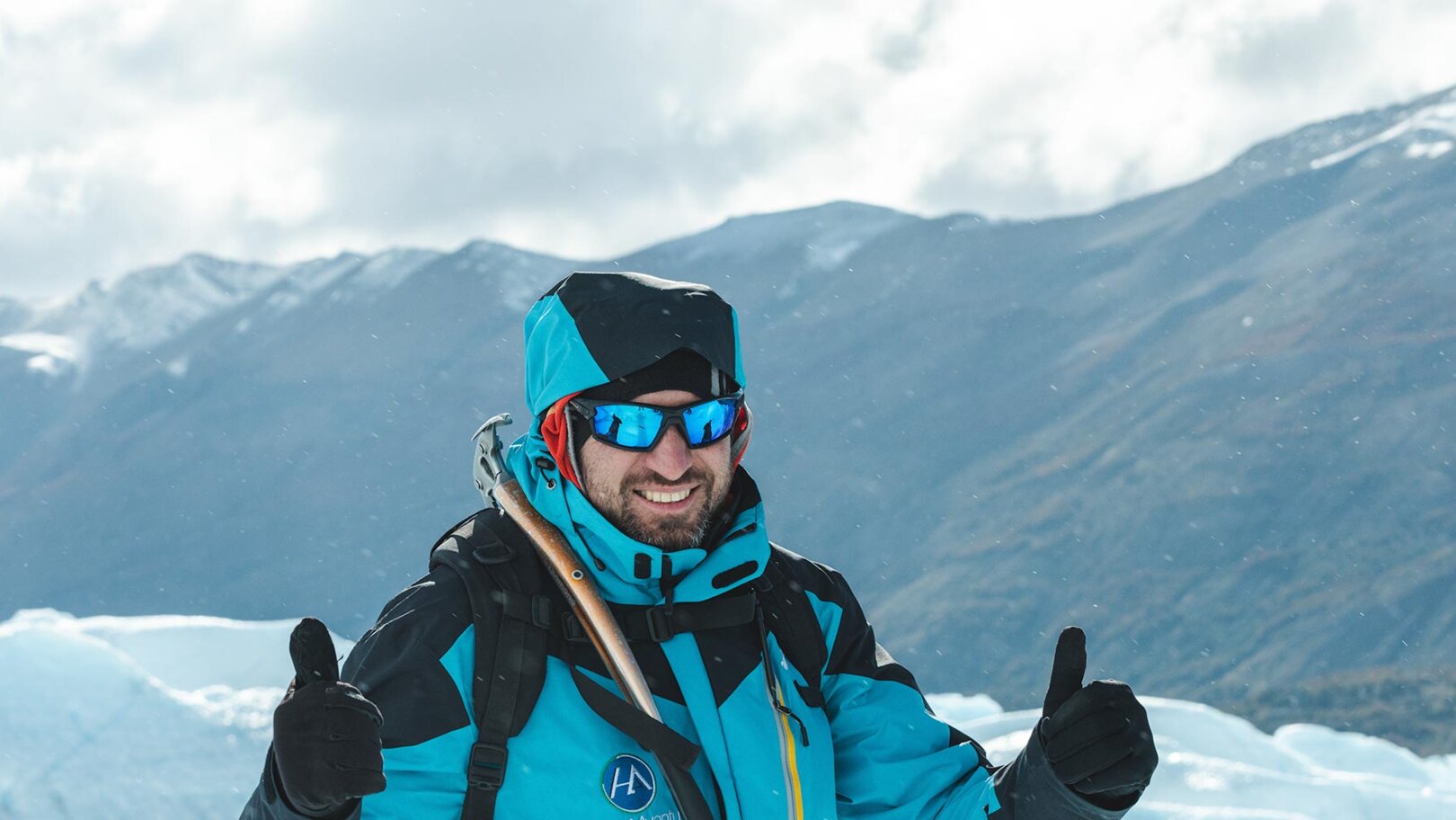
Anna Brech 22nd Sep 2022 4 min read
A career break is the dream scenario for many but engineering it is easier said than done. In reality, the trajectory can often take people from school, to university and then straight into working life. It was the sensible thing to do, right? There’s bills and rent to pay. Yet there’s a whole world out there just waiting to be explored. And more to life than routine and responsibility.
Whether you dream of hiking through the Amazon in Peru or re-centering yourself on the islands of Bali , taking time out can be beneficial to your mental health, as well as your performance at work. That’s where a sabbatical comes in. A period of time totally free of your working duties to do whatever you’ve always wanted, with the added satisfaction of job security for when you return. So, how to organize time out without quitting your job?
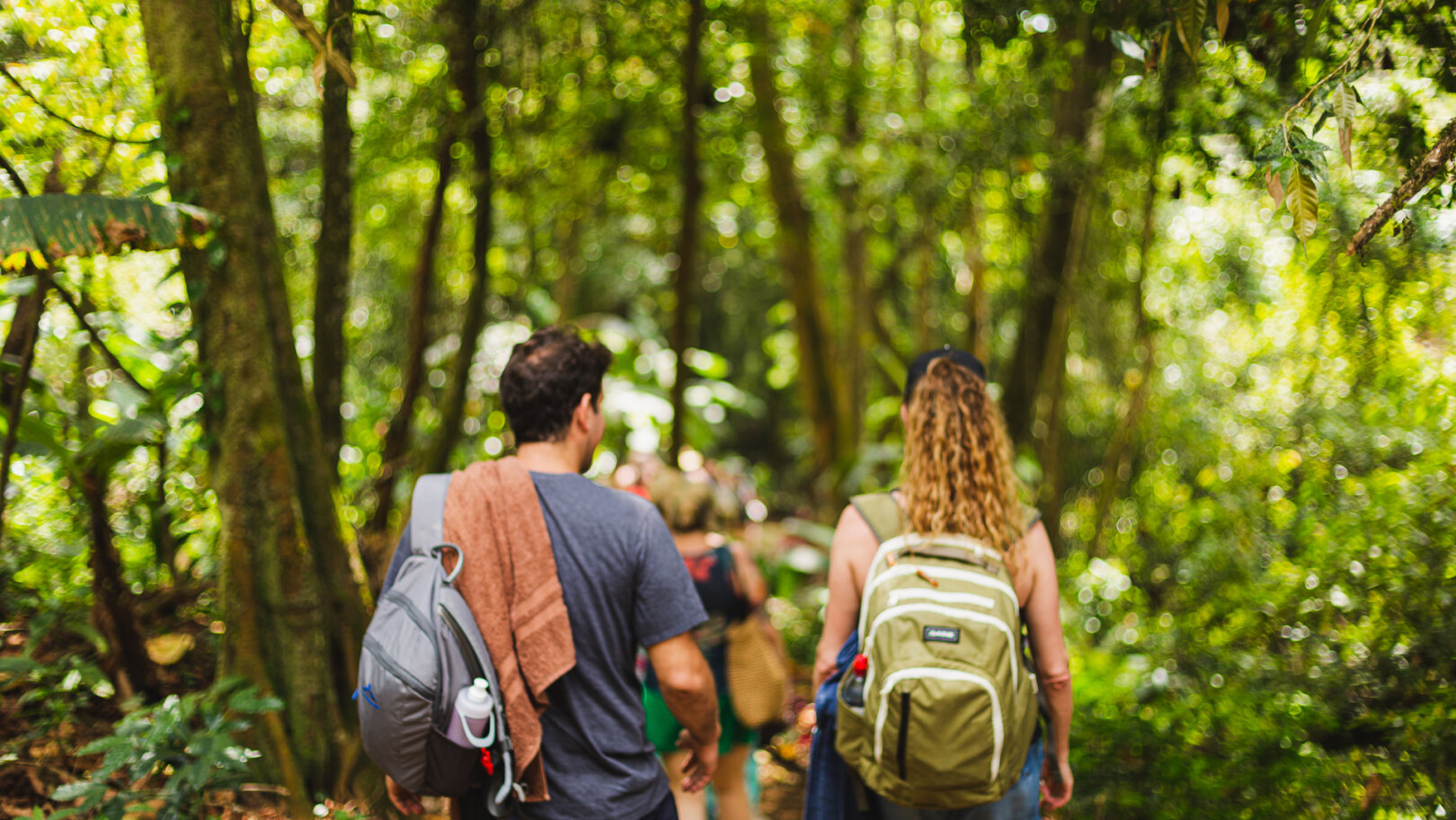
Breaking from your routine can spark a new passion for life
If sabbaticals are a no go, then one of the easiest ways to press pause is to simply to go on a trip. Forget week-long getaways that are over as soon as you begin to unwind. What burnt out professionals need is a proper two week or longer break from the world of work. This means saving up your annual leave (and your pennies) or looking at ways to maximise your PTO and taking the plunge with booking an adventure .
Breaking from your routine and waking up somewhere new can spark a fresh passion for life and release your inner adventurer, returning home a brighter version of yourself – with amazing memories to boot. Just make sure to book it around public holidays to squeeze every last ounce of adventure.

Use this time to fully recharge your batteries
In the world of career breaks, a sabbatical can be too long, yet an extended holiday just too short. If this is you then there’s always the option of taking some unpaid leave to find that lovely middle ground.
The best way to do this is to save up your annual leave and then add on a chunk of time away from your office where you’re not paid. It can be a risky move, both in terms of financial stability and job security yet, providing you’re organized and open with your employers, it can be totally worthwhile. Use this time to fully recharge your batteries, do something entirely different and explore the big wide world.
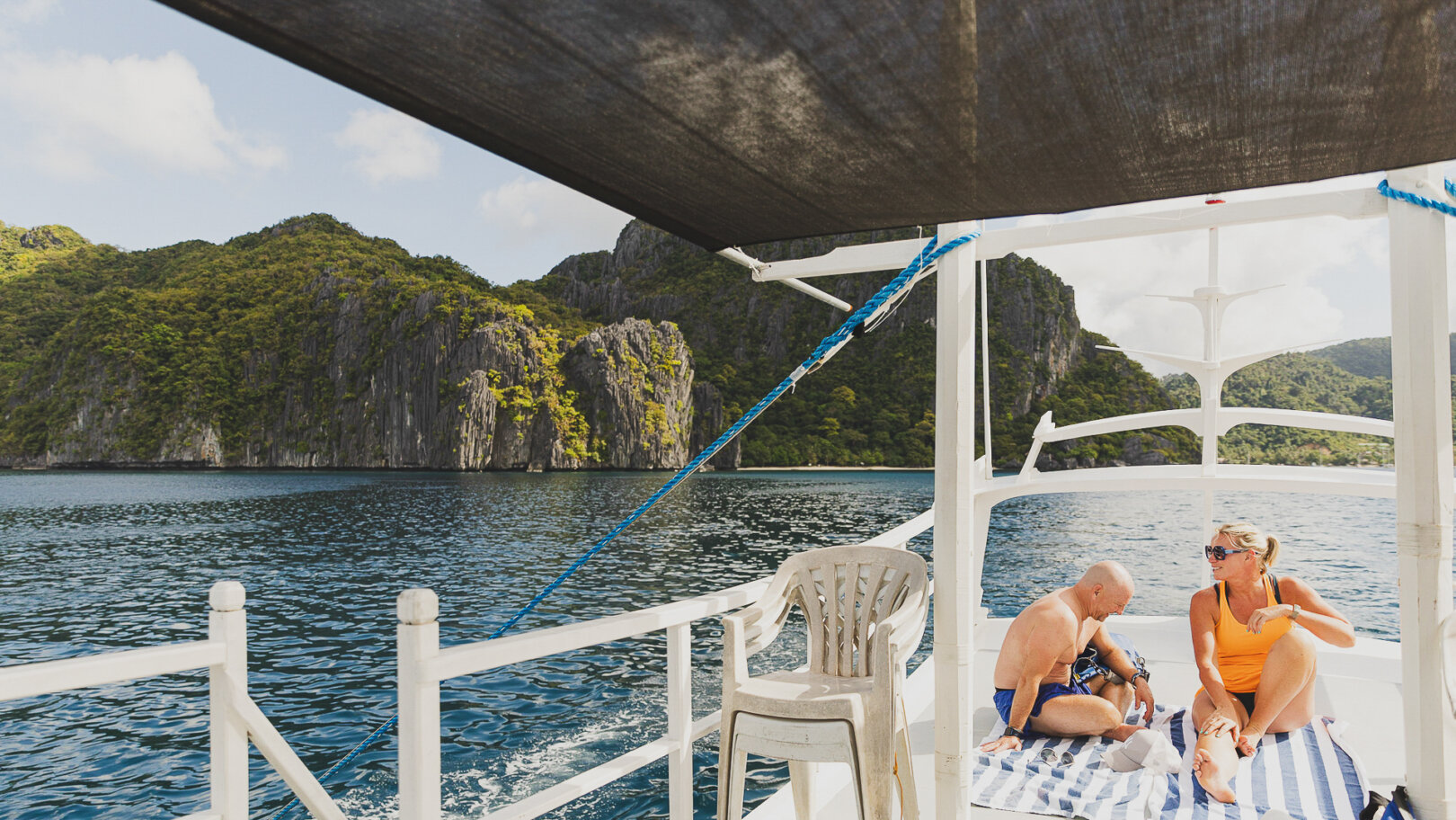
Your workplace will have a policy on how long you can take
Once you’re inspired with new dreams and aspirations, it’s time to wrangle the time off work with your employers. Your workplace will have a policy regarding how long you can take and what you’re entitled to. For certain breaks, like sabbaticals, you usually need to have worked a certain amount of time and it’s important to check if any of your benefits will be suspended.
But approaching this requires being tactical. Requesting sabbaticals, extended holiday and unpaid leave is not always well received, so you need to present your case positively. Particularly for sabbaticals and gap years, it’s important to arrange a meeting with your manager and outline all the benefits to them.
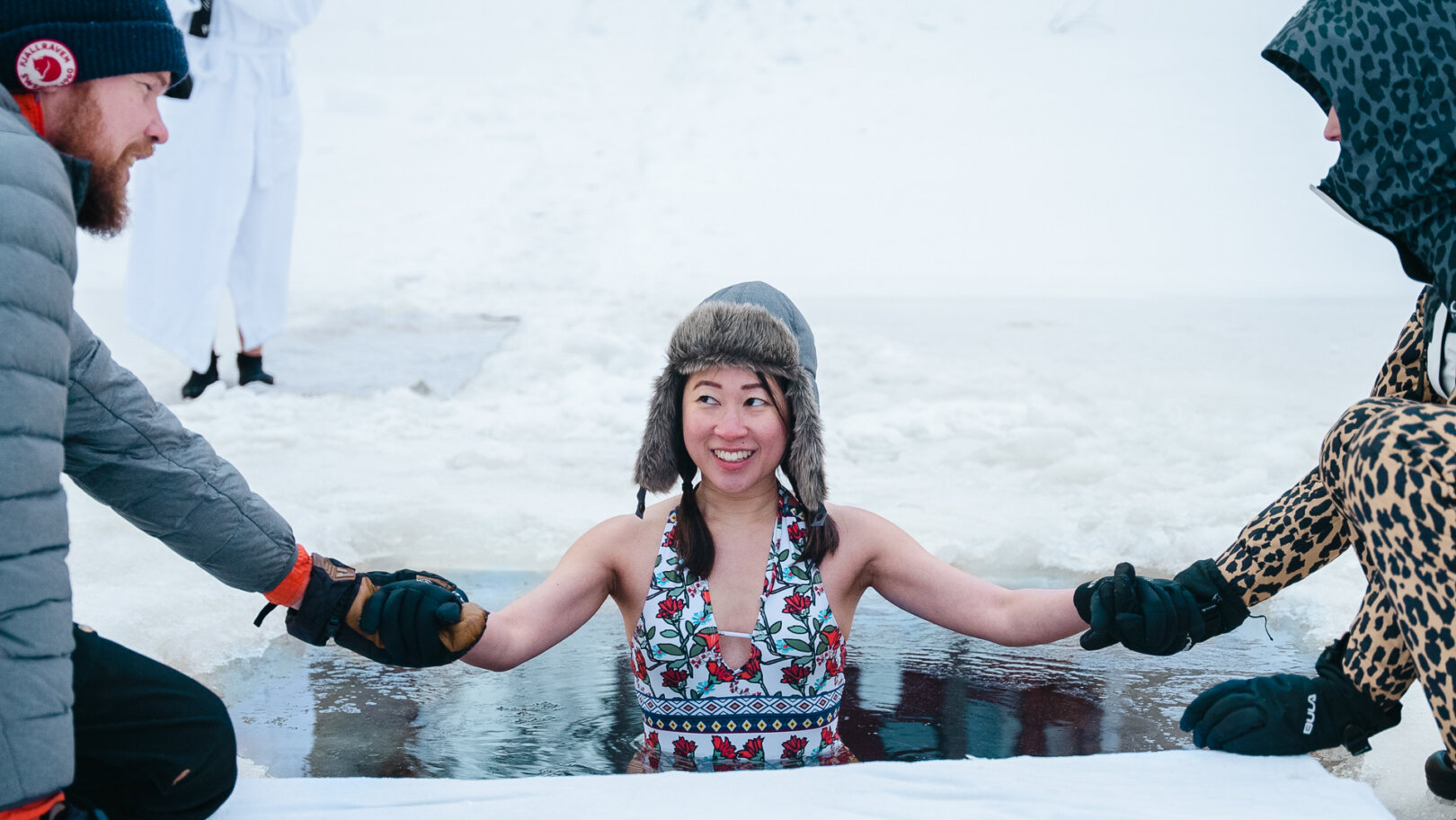
The key is to be totally clear and focused on why it’s so important
Be prepared with information about your career plans, travel itinerary and the new skills you could bring back to the company. From new languages and enhanced communication skills to overseas charity work, the key is to be totally clear and focused on why it’s so important.
The impact of work burnout is worth considering as a way of approaching how a career break will be beneficial to your employer. If necessary, be proactive in lining up cover for whilst you’re away and, if possible, plan your break during a quieter time of year for the company. Thinking of these factors will show your plans are totally considered with no stone left unturned.
Thinking of taking a career break in your 30s or 40s? Join Flash Pack today to go on an adventure with other like-minded travelers.
Got a story or adventure that could inspire a solo traveler like you? Tag @flashpack on social or email [email protected] to be featured.
Images: Flash Pack
Try these eight delicious wine-food pairings recommended by chefs and sommeliers
By Anna Brech
You might also like
Your latest travel inspiration
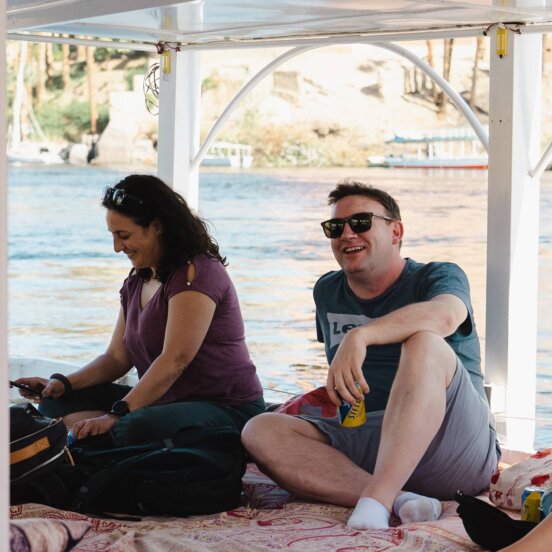
“Ghosting” in friendship is rare – most people simply drift apart
Ghosting or toxic behavior in friendship is unusual, according to expert Professor Jeffrey A. Hall. The truth is, life makes it hard to stay in touch.
Jeffrey A. Hall 5th September 2024 4 min read

“Solo travel is the opposite of addiction. You’re present in the world”
Celebrity sober coach Bob Marier says quitting alcohol has transformed his life, opening up a whole new world of adventure and connection.
Bob Marier 30th August 2024 4 min read

Sober curious? The unexpected joys of traveling alcohol-free
After giving up alcohol, writer Maggie Downs welcomed in a world of early morning yoga and geothermal swims.
Maggie Downs 29th August 2024 4 min read
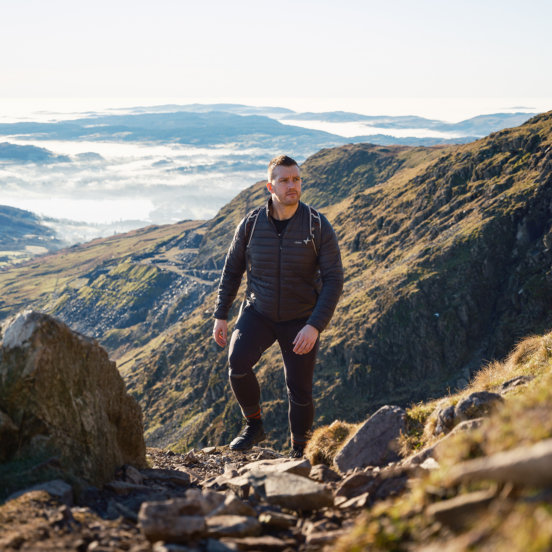
Mental Health
Hiking in the hills of Cumbria turned me from an addict into a fell-loving foodie
Camp-stove cook, Harrison Ward – aka “Fell Foodie” – describes how hiking in the great outdoors helped him kick the booze for good.
Harrison Ward 29th August 2024 4 min read
Subscribe to our newsletter
Sign up to our newsletter.
Hear about our new adventures before anyone else
Hear about our new adventures before anyone else.
Be the first to hear about exclusive Flash Pack offers.
Access exciting competitions.
Receive weekly inspiration and travel stories from solos just like you.
You are browsing our US website.
Please choose your current location below:
You are browsing our UK website.

IMAGES
VIDEO
COMMENTS
For many people, capturing the moments is part of the joy of travelling. 14. Getting ready to manage your travel money. Managing your finances while travelling is one of the many learning curves of a travel career break. There's a lot you can do before you set off to make life easier on the road when it comes to money.
I took a career break at 25 and spent 4 months travelling around the world. I'd come to a breaking point at my job, knew I wanted to do something different but wasn't sure what. For a while I entertained the notion of grad school -- even wrote the GMATs and started filling out applications -- and then decided to shelve the whole thing in favour ...
A career break can help ease brain fog. Brain fog - lack of clarity, difficulty in focus - is a growing problem in our frenetic modern lives. Left untended, it can easily lead to more serious conditions, such as burnout and depression. If overloading is a problem for you, taking a career break can help to ease the strain.
Not in my 20s but in my early 40s.I think it makes much more sense having a career break when: a) you have more disposable income and therefore can afford a more luxurious way of travel and b) you built up a great cv and when you are back from the break your chances to find a well paid job are increased. Reply.
Catch up on all my Career Break Travel posts or see what tips I have for busy working professionals who want to indulge their ... 2016 2017 Career Break Career Break 2016-2017 Solo Traveller Travel Budget Travel Planning Travel Tips Travelling Occasionally. Post navigation. Hotel Jen Beijing review: Leave boring behind. Some thoughtful thoughts ...
It gives you the chance to give back. Taking a career break at 40 means you can use your years of work experience to help people and organizations in a meaningful way, giving back to communities and using your leadership skills to create change and make a difference. Learn new skills.
ADMIN MOD. Recommendations on a career break. Help needed! Hi, I'm a 28 year old that's looking for some career/travel advice. I've been working straight out of uni for the past 5 years at one company and climbed to a fairly senior position making £90-100k (~$115k) per year. I've been lucky enough to save up around £50k these past ...
Now is the time to get out your bucket list and start doing those once-in-a-lifetime experiences. 2. Gain new skills. Taking a career break to travel can result in having a number of new skills and experiences in your pocket. A lot of them you won't even realise that you've acquired until you reflect on it.
Plan your travel career break Browse our library of articles below to plan your travel career break, including saving, route-building, raising the question at work, and much more. See our ultimate guide to taking a travel career break for a step-by-step process.
3. Solo travel allows for increased self-discovery and the chance to step out of comfort zones. 4. Planning and budgeting are essential when embarking on a career break for solo travel. 5. Networking and building connections while traveling can lead to unexpected career opportunities in the future.
Travel enables you to develop attributes that will make you far more effective in the workplace. Kate continues: "People who take career breaks to focus on their personal wellbeing are confident, self-motivated and would be an asset to most organizations.". "It's the perfect example of personal leadership.".
Cali is a Career Break coach who helps professionals smash their burn out by creating intentional career breaks filled with adventure and purpose. ... She runs a Facebook group called Travel Shifters and is also very active on Clubhouse. She is here today to discuss all things solo travel, leaving the work place to travel, workplace burnout and ...
Cali O'Connor shares her experience of taking multiple career breaks and offers 5 practical steps to start planning your own career break today. Cali is a former chemical engineer who traded her career in the oilfield for a life-changing adventure of quitting her job to travel around the world.
The point is, that taking a career break to travel will open your eyes to so many experiences and opportunities which you wouldn't have guessed would exist. It empowers you to find new hobbies, new goals, and offers a completely new perspective on life. It saves you from the monotony of 9-5 office life.
2. Save, save, save. Whether you're planning to travel domestically or internationally, it's apt to cost money, especially if you're doing it for an extended period of time.
Whether you are traveling or staying local, find a community to help support yourself professionally. Take notes and try and learn. A sabbatical is usually a time to be reflective. Use the time wisely, so you can look back and understand your journey through your unique time away from work. Pick a duration.
ADMIN MOD. Turning 30 soon, planning a gap half-year career break. Hey guys, Was just wondering if anyone has had a similar experience or is in a relatable position. I am a way-too-close-to-30 year old man, and I've been lucky to solo travel a reasonable amount when I was younger- about 9 months all up spread over 5 or 6 trips (covering SEA ...
Instead, think about what you did on your travels that had to do with education, skill building, volunteering, and business, and highlight them in a professional manner. But there are some other skills you might want to consider: 1. Volunteering. One should always represent any volunteering done while traveling on a résumé.
Ships set sail from Ushuaia, the world's southernmost city, in Argentina - take a look at G Adventures' Antarctica cruise packages. Career break ideas: Patagonia features some of the world's most breathtaking hiking trails. 3. Road-trip the USA West Coast in a van.
Thinking of taking a career break in your 30s or 40s? Join Flash Pack today to go on an adventure with other like-minded travelers. Got a story or adventure that could inspire a solo traveler like you? Tag @flashpack on social or email [email protected] to be featured. Images: Flash Pack
A place for all of those interested in solo travel to share their experiences and stories! ... Midlife Career Break - Solo trip . I am burned out and have decided to leave my job and take a career break. Financially it isn't the greatest decision but I need to do it for my physical and mental health and just overall well-being. My hope is to go ...
The best spot for a career break on your resume is in your experience section. To add one, follow these simple steps: Come up with a name for the "position," such as "Family Sabbatical," "Professional Development," or "Volunteer.". Where the name of a company is typically listed, add "Career Break,". "Planned Career Break ...
I did the exact same thing 6 years ago. Was actually prepared to quit, but my employer offered me 3 months unpaid leave. I ended up backpacking solo for those 3 months (my first time travelling alone) and it was the most profound experience for me that once I returned I saved up money the next year and quit for real to travel long-term.